

How Many Cruise Ships Have Sunk?
The thought of a cruise ship sinking conjures images of historic maritime tragedies, sparking curiosity and concern among modern travelers.
Despite the advancements in safety and technology, the question lingers in the minds of many: How many cruise ships have actually sunk? In this article, we dive deep into the annals of maritime history and safety records to uncover the truth.
By examining the rare instances of cruise ship sinkings, we’ll provide perspective on the safety of cruising today.
Whether you’re a maritime history enthusiast or planning your next vacation at sea, understanding these incidents sheds light on the impressive safety standards that protect millions of passengers each year.
The Titanic Tragedy (April 1912)
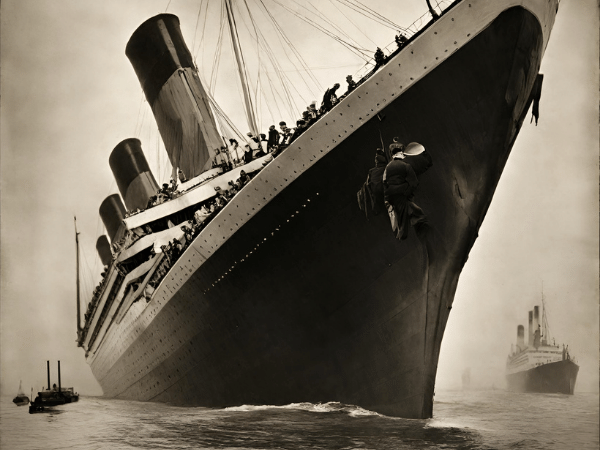
The Titanic’s sinking is one of the most well-known maritime disasters. On its first trip across the Atlantic Ocean, the ship hit an iceberg on the night of April 14, 1912. In just over two and a half hours, the Titanic was completely underwater. Sadly, most passengers couldn’t evacuate safely because there weren’t enough lifeboats for everyone.
The disaster led to more than 1,500 deaths, making it one of the deadliest incidents at sea. The freezing waters made survival even harder for those who couldn’t get on a lifeboat. The Titanic’s sinking is remembered as a tragic event in maritime history.
The Empress of Ireland Tragedy (May 1914)
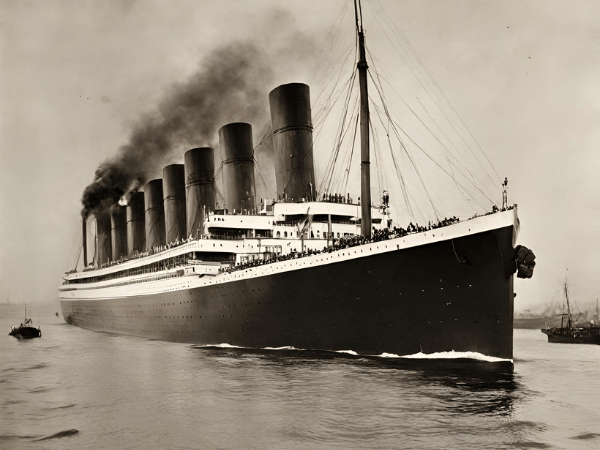
Just two years after the Titanic sank, the Empress of Ireland had its own tragic accident. In May 1914, this ship with nearly 1,500 passengers hit the Norwegian ship Storstad. They could see each other earlier, but then fog made it hard to see.
The crash caused 1,012 passengers and crew to lose their lives. The Empress of Ireland was close to making 1,000 trips without any problems, but this was not one of them. This accident is another sad event in the history of ships at sea.
The Sinking of the Lusitania (May 1915)
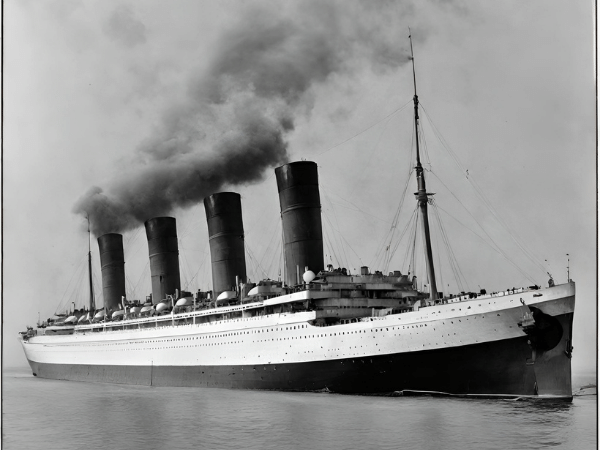
Cunard Line has been operating ships since 1940 and is still active today. One of its famous ships is the Queen Mary 2, the last ocean liner still in service.
The RMS Lusitania, built for Cunard Line, was the world’s largest passenger ship for three months. On May 7, 1915, while sailing off the coast of Ireland to Liverpool, England, a German U-Boat torpedoed the Lusitania. The ship started to sink faster than expected, and only six lifeboats could be launched.
Nearly 1,200 people died in the sinking of the Lusitania. This event is remembered as one of the major maritime tragedies of the early 20th century.
The Britannic’s Fate (November 1916)
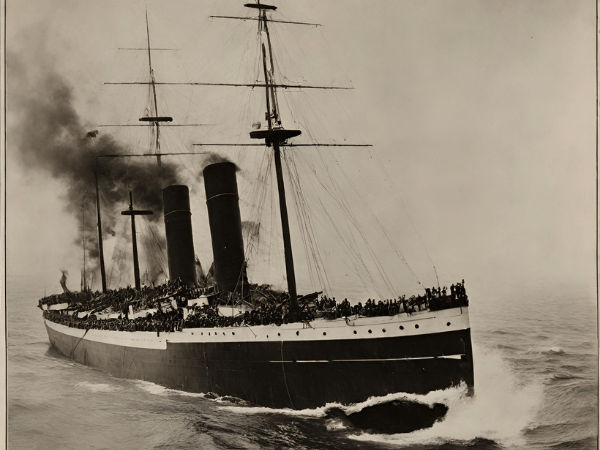
The Britannic was the younger sister of the Olympic (1911) and Titanic (1912). Although intended to be a passenger ship, the outbreak of World War I changed her purpose. She became a hospital ship in December 1915.
In November 1916, less than a year into her service, the Britannic hit a German naval mine in the Kea Channel between the Greek islands of Kea and Makronisos. She sank 55 minutes later.
Fortunately, the casualties were minimal. Most people on board managed to escape on the 35 lifeboats that were launched. However, around 30 people still lost their lives in the sinking of the Britannic.
The Sinking of the Principessa Mafalda (October 1927)
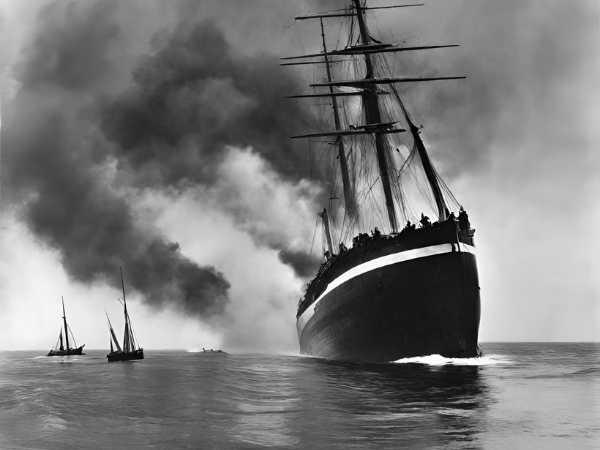
The Principessa Mafalda was an Italian ship named after a princess. It started sailing in 1909 between Genoa, Italy, and Buenos Aires, Argentina.
In October 1927, the ship had a big problem when its propeller shaft broke, damaging the bottom of the ship. It sank off the coast of Brazil, and sadly, more than 300 people died.
The Saint-Philibert Tragedy (June 1931)
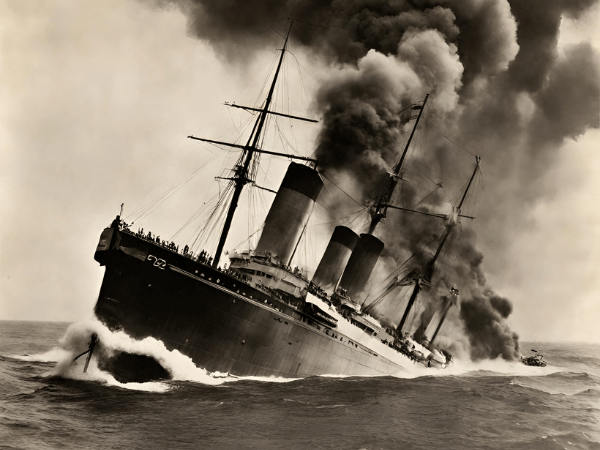
The Saint-Philibert, a small cruise ship, capsized and sank on June 14, 1931, off the coast of France. This tragic event led to the loss of nearly 500 lives, with only 8 passengers surviving.
Before this disaster, the Saint-Philibert was known for offering summer voyages along the French coast.
Check out: What Cruise Can You Go on Alone at 18?
The Sinking of the Georges Philippar (May 1932)
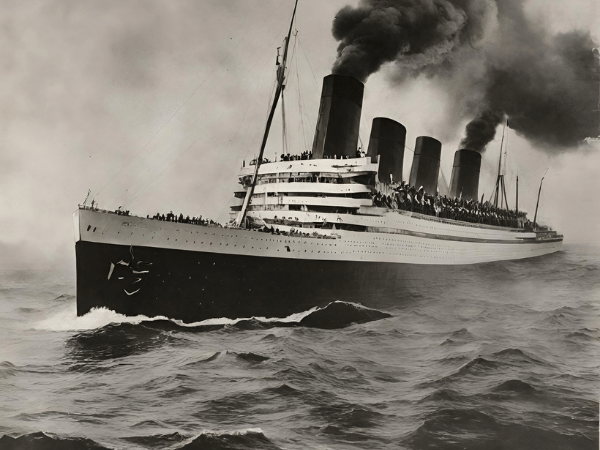
The French ocean liner Georges Philippar sank on the second leg of her maiden voyage near present-day Yemen, resulting in the loss of 54 lives.
The sinking was caused by an electrical fault. A fire started in one of the luxury cabins due to a faulty light switch that sparked and set the wood paneling on fire.
Before setting sail, there were worries about the ship’s safety. The ship’s launch was almost delayed to fix defects. However, these concerns were ignored to avoid penalties for delays.
The Tragedy of the SS Morro Castle (September 1934)
The SS Morro Castle, an American ocean liner operated by Ward Line, was traveling from Havana, Cuba, to New York City when it caught fire and ran aground on September 8, 1934.
The night before the disaster, Captain Robert Rennison Willmott, the ship’s captain, suddenly died after complaining about a stomach ache. Command of the ship was then passed to Chief Officer William Warms.
There were 137 casualties in total. Much of the blame was placed on the crew for not handling the emergency properly. Although the lifeboats could hold up to 408 people, they were launched with only 85.
The Sinking of the Empress of Britain (October 1940)
The Empress of Britain, an ocean liner of over 42,000 gross registered tons, holds the sad record of being the largest ocean liner sunk during World War II, and also the largest ship sunk by a U-Boat during the conflict.
On October 26, she was first bombed from above, then sunk by a torpedo launched by German U-Boats on October 28.
Most of the 416 crew members, 2 gunners, and 205 passengers managed to abandon the ship, leaving few people on board. In total, 45 people lost their lives in this tragic event.
The Collision of Andrea Doria and MS Stockholm (July 1956)
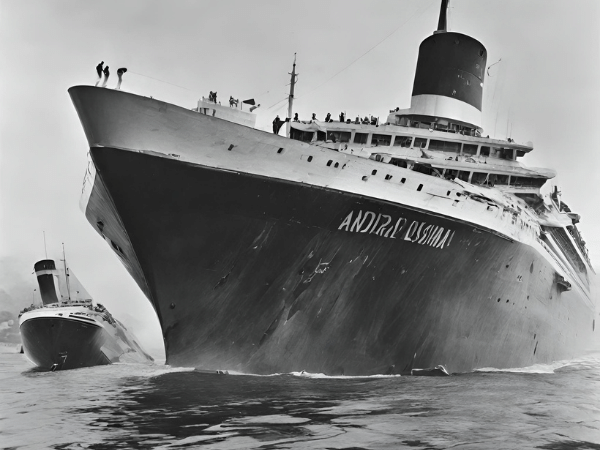
On July 25, 1956, the Andrea Doria and the MS Stockholm collided while on their way to New York City. The accident resulted in 51 deaths. However, this event is also known for one of the largest rescues in maritime history.
Thanks to improved communication systems, the crew of the Andrea Doria was able to quickly start rescue efforts and get help from other ships. Only five people died on board the Stockholm.
The damage to the Andrea Doria was so severe that the ship could not be saved. Those who lost their lives did so because of the initial collision.
The Story of the Bianca C (October 1961)
The Bianca C first sank during World War II when the Germans scuttled her before she was completed. Later, her hull was raised and refitted to become a cruise ship. She was first owned by Panama’s Arosa Line as their flagship but was eventually sold to Costa Line, where she got the name Bianca C after the owner’s daughter.
On October 22, 1961, while docked off the coast of Grenada, an explosion in the ship’s engine room led to fires breaking out. Thankfully, except for one person killed in the initial explosion, everyone was able to evacuate the ship before it sank.
The Journey and End of the Angelina Lauro (September 1979)
The Angelina Lauro didn’t always serve as a cruise ship. She started her journey in 1939 as the MS Oranje. Initially meant to be a passenger ferry, she was kept in Indonesia and turned into a hospital ship. After World War II, she sailed as a passenger liner for around 11 years, making trips around the world from Amsterdam to Australia through the Panama Canal and back via Singapore and the Suez Canal.
In 1964, she was sold to Lauro Lines and refitted as a cruise ship. She embarked on her maiden voyage as the Angelina Lauro on March 6, 1966. In the late 70s, Costa Lines chartered her.
While docked in Saint Thomas, the Angelina Lauro caught fire. The blaze lasted for several days. Before she could be towed to a scrapyard, her weakened hull began to take on water. She finally sank on September 24, 1979.
The Sinking of the MS Mikhail Lermontov (February 1986)
The MS Mikhail Lermontov was an ocean liner operated by the Soviet Union’s Baltic Shipping Company, entering service in 1972. A decade later, it was upgraded to serve as a cruise ship.
On February 6, 1986, the ship left Sydney for a two-week cruise around New Zealand. Ten days into the journey, while sailing past Cape Jackson, it hit rocks. Out of the 743 crew and passengers on board, the majority managed to escape on lifeboats. Tragically, there was one casualty: crew engineer Pavel Zagladimov.
The Tragic Collision of the SS Admiral Nakhimov (August 1986)
The SS Admiral Nakhimov started its journey in 1925 as the SS Berlin, a passenger liner of the German Weimar Republic. It later served as a hospital ship before becoming a Soviet Union passenger ship.
In August 1986, the ship met a tragic end when it collided with another ship in Tsemes Bay. The ship sank quickly, and sadly, 423 people lost their lives in the incident. This marked the third and final time that the ship sank.
The Sinking of MV Jupiter (October 1988)
The MV Jupiter, a Greek cruise ship, started sailing in 1961 as the Moledet. On October 21, 1988, it sank after leaving Piraeus, Greece. An Italian freight ship hit it.
The ship had nearly 400 British students, 84 adults, and 110 crew members on a study cruise. Sadly, one student, one teacher, and two crew members died. About 70 others were injured.
The Sinking of MTS Oceanos (August 1991)
The MTS Oceanos, another Greek ship, sank three years after the MV Jupiter. It was traveling from South Africa to Durban when rough seas hit. A storm made things worse.
The ship’s waste system wasn’t fixed right. A key pipe wasn’t replaced. It’s thought that huge waves broke the pipe, letting seawater flood in.
No one died, but the captain and crew were found guilty of leaving without helping passengers. The ship’s entertainers led all rescue efforts.
The Sinking of MS Estonia (September 1994)
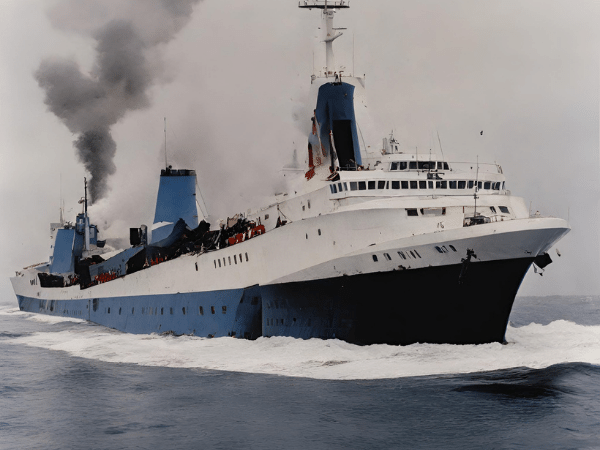
The sinking of the MS Estonia in 1994 was one of the worst maritime disasters of the 20th century. It was the deadliest peacetime sinking of a European ship after the Titanic and the Empress of Ireland. Over 850 lives were lost.
While sailing through rough waters in the Baltic Sea, a metallic bang was heard. Soon after, passengers and crew reported similar sounds. Around 1:15 am, the visor separated, opening the loading ramp and causing the ship to list as water flooded in.
It was difficult for those in cabins to reach the boat deck. Water was entering the ship through the car deck and the windows of public areas and cabins on Deck 6.
The Achille Lauro Incident (December 1994)
The Achille Lauro, originally the ocean liner Willem Ruys, was converted into a cruise ship by Italian businessman Achille Lauro in 1965. It had a series of unfortunate events, including collisions and onboard fires.
In 1985, the ship was hijacked by members of the Palestine Liberation Front. On November 30, 1994, the Achille Lauro caught fire while sailing to South Africa. There were 979 passengers and crew onboard. The majority evacuated the next morning when the ship listed, but two people were killed before it sank on December 2.
The Final Voyage of the Sun Vista (May 1999)
The Sun Vista started its journey in 1963 as the SS Galileo Galilei for the Lloyd Triestino line. Over the years, it sailed for five different cruise lines, including as the first-ever cruise ship for Celebrity Cruises, the Meridian. In 1997, it was transferred to Sun Cruises and renamed the Sun Vista.
On May 20, 1999, a fire broke out in the ship’s engine room. The Sun Vista sank in the early morning hours of May 21 in the Strait of Malacca. Fortunately, all passengers and crew were able to escape safely.
The Sinking of the Britanis (October 2000)

The Britanis began its life as the luxury ocean liner SS Monterey in 1932. It later sailed for Chandris under their “Fantasy Cruises” division starting in February 1971. When Chandris shifted focus to the Celebrity Cruises brand, all Fantasy Cruises operations ceased. In 1998, the ship was sold to AG Belofin and renamed Belofin-1.
Instead of being refurbished, the Britanis was sold to scrappers. While being towed to a scrapyard from Brazil, it developed a leak at the back of the ship. With no one on board, the ship was cut free and capsized off the coast of Cape Town, South Africa.
The Sinking of SeaBreeze (December 2000)
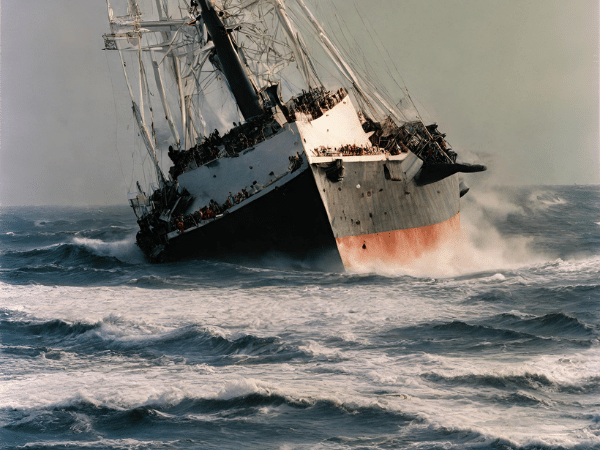
The SeaBreeze, originally named Federico C., was launched in 1958 and sailed for Costa Cruises. In 1983, it was transferred to Premier Cruises and renamed three times.
Premier Cruises went out of business in September 2000, leading to the ship being laid up. While being moved from Halifax, Nova Scotia, to Charleston, South Carolina, by its new owner, Cruise Ventures III, the SeaBreeze sank about 225 nautical miles off the coast of Virginia. All 34 crew members on board were rescued safely.
The ship sank due to the boiler breaking off, causing significant damage to the vessel.
The Sinking of MV Explorer (November 2007)

The MV Explorer, originally the MS Lindblad Explorer, began her career in 1969 as the first ship of her kind to sail through the Antarctic Ocean.
On November 11, 2007, she set sail from Ushuaia, Argentina, for a 19-day cruise. After visiting the Falkland Islands, she hit an iceberg in the Bransfield Strait on November 23, causing a gash in the hull that let water in.
All 91 passengers, 53 crew, and 9 guides were able to escape on lifeboats. They stayed there for five hours until the MS Nordnorge rescued them.
The Sinking of MS Sea Diamond (April 2007)
The MS Sea Diamond, originally known as Birka Princess, operated for Birka Line for most of her time at sea. In 2006, she was sold to Louis Cruises Line and renamed. A year later, she ran aground on a reef near Santorini, with 77 students from Paisley Magnet School in North Carolina on board.
Initially, it was believed that all passengers and crew were safe. However, two French citizens, Jean Christophe Allain, 45, and his daughter Maud, 16, were reported missing and never found.
Greek authorities later announced plans to charge the captain and five other officers with negligence.
The Capsizing of Costa Concordia (January 2012)
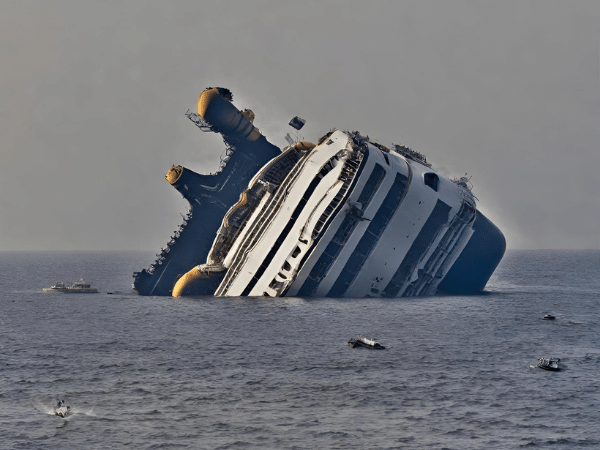
The Costa Concordia was the first ship of Costa Cruises’ Concordia Class, entering service in 2006. On January 13, 2012, she set sail on a 7-night Mediterranean cruise with 3,206 passengers and 1,023 crew members.
Captain Francesco Schettino veered off course, sailing too close to the island of Giglio. The ship struck a large rock, causing a 174-foot gash in the hull, leading to flooding and loss of power. The ship’s rudder position made it unsteerable, and it began tilting toward the starboard side.
The evacuation took over six hours and resulted in 32 deaths. An investigation focused on the crew’s actions, particularly Captain Schettino’s, as he left the ship while passengers were still on board.
Leave a Comment Cancel reply
Save my name, email, and website in this browser for the next time I comment.
'We all suffer from PTSD': 10 years after the Costa Concordia cruise disaster, memories remain
GIGLIO, Italy — Ten years have passed since the Costa Concordia cruise ship slammed into a reef and capsized off the Tuscan island of Giglio. But for the passengers on board and the residents who welcomed them ashore, the memories of that harrowing, freezing night remain vividly etched into their minds.
The dinner plates that flew off the tables when the rocks first gashed the hull. The blackout after the ship's engine room flooded and its generators failed. The final mad scramble to evacuate the listing liner and then the extraordinary generosity of Giglio islanders who offered shoes, sweatshirts and shelter until the sun rose and passengers were ferried to the mainland.
Italy on Thursday is marking the 10th anniversary of the Concordia disaster with a daylong commemoration that will end with a candlelit vigil near the moment the ship hit the reef: 9:45 p.m. on Jan. 13, 2012. The events will honor the 32 people who died that night, the 4,200 survivors, but also the residents of Giglio, who took in passengers and crew and then lived with the Concordia's wrecked carcass off their shore for another two years until it was righted and hauled away for scrap.
► CDC travel guidance: CDC warns 'avoid cruise travel' after more than 5,000 COVID cases in two weeks amid omicron
“For us islanders, when we remember some event, we always refer to whether it was before or after the Concordia,” said Matteo Coppa, who was 23 and fishing on the jetty when the darkened Concordia listed toward shore and then collapsed onto its side in the water.
“I imagine it like a nail stuck to the wall that marks that date, as a before and after,” he said, recounting how he joined the rescue effort that night, helping pull ashore the dazed, injured and freezing passengers from lifeboats.
The sad anniversary comes as the cruise industry, shut down in much of the world for months because of the coronavirus pandemic, is once again in the spotlight because of COVID-19 outbreaks that threaten passenger safety. The U.S. Centers for Disease Control last month warned people across-the-board not to go on cruises, regardless of their vaccination status, because of the risks of infection.
► 'We found out while we were flying': Last-minute cruise cancellations leave travelers scrambling
► 'The Disney magic is gone' ... or is it?: Longtime fans weigh in on changes at Disney World
'We all suffer from PTSD'
For Concordia survivor Georgia Ananias, the COVID-19 infections are just the latest evidence that passenger safety still isn’t a top priority for the cruise ship industry. Passengers aboard the Concordia were largely left on their own to find life jackets and a functioning lifeboat after the captain steered the ship close too shore in a stunt. He then delayed an evacuation order until it was too late, with lifeboats unable to lower because the ship was listing too heavily.
“I always said this will not define me, but you have no choice," Ananias said in an interview from her home in Los Angeles, Calif. “We all suffer from PTSD. We had a lot of guilt that we survived and 32 other people died.”
Prosecutors blamed the delayed evacuation order and conflicting instructions given by crew for the chaos that ensued as passengers scrambled to get off the ship. The captain, Francesco Schettino, is serving a 16-year prison sentence for manslaughter, causing a shipwreck and abandoning a ship before all the passengers and crew had evacuated.
Ananias and her family declined Costa’s initial $14,500 compensation offered to each passenger and sued Costa, a unit of U.S.-based Carnival Corp., to try to cover the cost of their medical bills and therapy for the post-traumatic stress they have suffered. But after eight years in the U.S. and then Italian court system, they lost their case.
“I think people need to be aware that when you go on a cruise, that if there is a problem, you will not have the justice that you may be used to in the country in which you are living,” said Ananias, who went onto become a top official in the International Cruise Victims association, an advocacy group that lobbies to improve safety aboard ships and increase transparency and accountability in the industry.
Costa didn’t respond to emails seeking comment on the anniversary.
► Royal Caribbean cancels sailings: Pushes back restart on several ships over COVID
'We did something incredible'
Cruise Lines International Association, the world’s largest cruise industry trade association, stressed in a statement to The Associated Press that passenger and crew safety was the industry's top priority, and that cruising remains one of the safest vacation experiences available.
“Our thoughts continue to be with the victims of the Concordia tragedy and their families on this sad anniversary," CLIA said. It said it has worked over the past 10 years with the International Maritime Organization and the maritime industry to “drive a safety culture that is based on continuous improvement."
For Giglio Mayor Sergio Ortelli, the memories of that night run the gamut: the horror of seeing the capsized ship, the scramble to coordinate rescue services on shore, the recovery of the first bodies and then the pride that islanders rose to the occasion to tend to the survivors.
► Cruising during COVID-19: Cancellation, refund policies vary by cruise line
Ortelli was later on hand when, in September 2013, the 115,000-ton, 1,000-foot long cruise ship was righted vertical off its seabed graveyard in an extraordinary feat of engineering. But the night of the disaster, a Friday the 13th, remains seared in his memory.
“It was a night that, in addition to being a tragedy, had a beautiful side because the response of the people was a spontaneous gesture that was appreciated around the world,” Ortelli said.
It seemed the natural thing to do at the time. “But then we realized that on that night, in just a few hours, we did something incredible.”
- History Classics
- Your Profile
- Find History on Facebook (Opens in a new window)
- Find History on Twitter (Opens in a new window)
- Find History on YouTube (Opens in a new window)
- Find History on Instagram (Opens in a new window)
- Find History on TikTok (Opens in a new window)
- This Day In History
- History Podcasts
- History Vault
The Costa Concordia Disaster: How Human Error Made It Worse
By: Becky Little
Updated: August 10, 2023 | Original: June 23, 2021

Many famous naval disasters happen far out at sea, but on January 13, 2012, the Costa Concordia wrecked just off the coast of an Italian island in relatively shallow water. The avoidable disaster killed 32 people and seriously injured many others, and left investigators wondering: Why was the luxury cruise ship sailing so close to the shore in the first place?
During the ensuing trial, prosecutors came up with a tabloid-ready explanation : The married ship captain had sailed it so close to the island to impress a much younger Moldovan dancer with whom he was having an affair.
Whether or not Captain Francesco Schettino was trying to impress his girlfriend is debatable. (Schettino insisted the ship sailed close to shore to salute other mariners and give passengers a good view.) But whatever the reason for getting too close, the Italian courts found the captain, four crew members and one official from the ship’s company, Costa Crociere (part of Carnival Corporation), to be at fault for causing the disaster and preventing a safe evacuation. The wreck was not the fault of unexpected weather or ship malfunction—it was a disaster caused entirely by a series of human errors.
“At any time when you have an incident similar to Concordia, there is never…a single causal factor,” says Brad Schoenwald, a senior marine inspector at the United States Coast Guard. “It is generally a sequence of events, things that line up in a bad way that ultimately create that incident.”
Wrecking Near the Shore
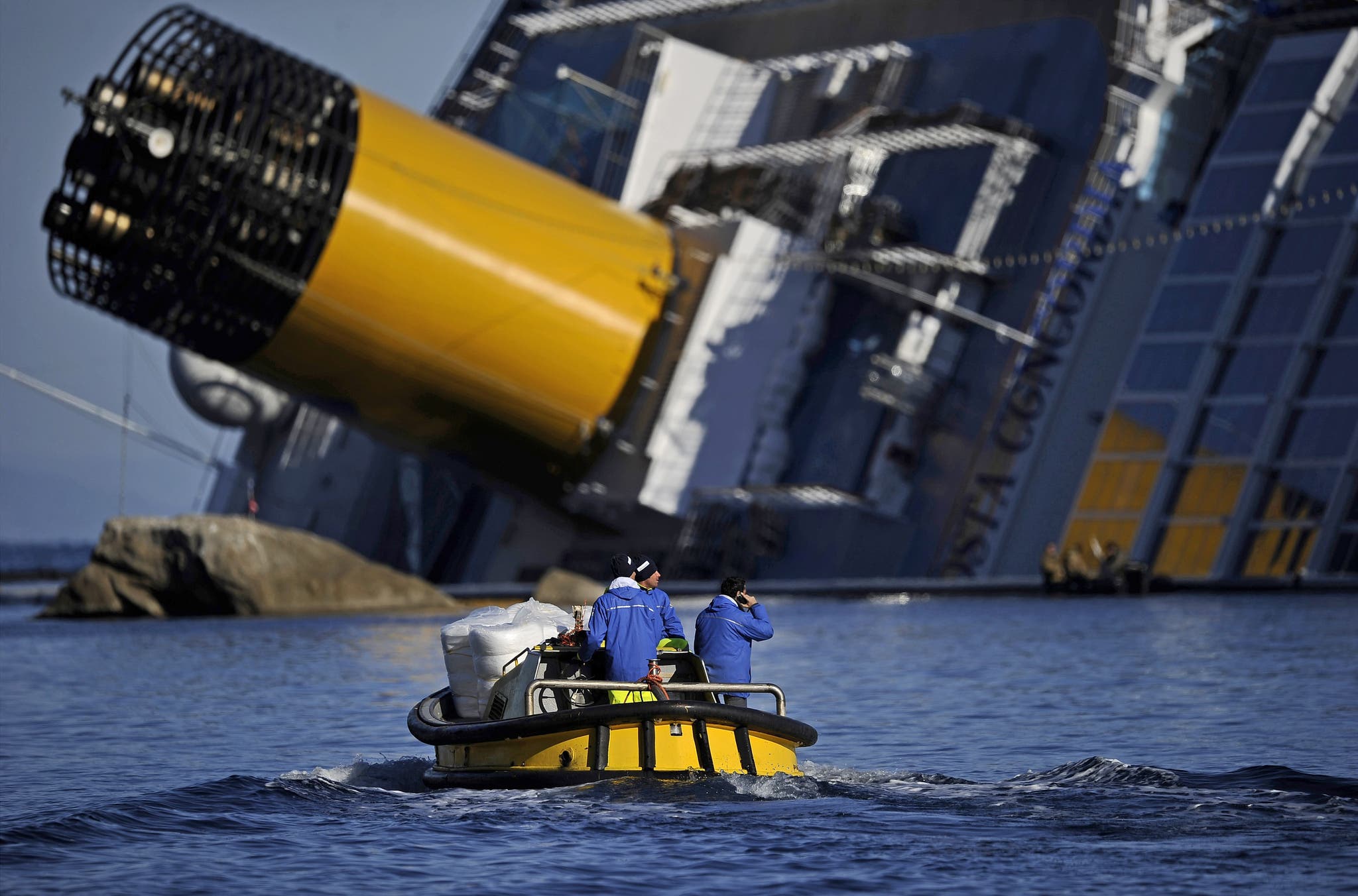
The Concordia was supposed to take passengers on a seven-day Italian cruise from Civitavecchia to Savona. But when it deviated from its planned path to sail closer to the island of Giglio, the ship struck a reef known as the Scole Rocks. The impact damaged the ship, allowing water to seep in and putting the 4,229 people on board in danger.
Sailing close to shore to give passengers a nice view or salute other sailors is known as a “sail-by,” and it’s unclear how often cruise ships perform these maneuvers. Some consider them to be dangerous deviations from planned routes. In its investigative report on the 2012 disaster, Italy’s Ministry of Infrastructures and Transports found that the Concordia “was sailing too close to the coastline, in a poorly lit shore area…at an unsafe distance at night time and at high speed (15.5 kts).”
In his trial, Captain Schettino blamed the shipwreck on Helmsman Jacob Rusli Bin, who he claimed reacted incorrectly to his order; and argued that if the helmsman had reacted correctly and quickly, the ship wouldn’t have wrecked. However, an Italian naval admiral testified in court that even though the helmsman was late in executing the captain’s orders, “the crash would’ve happened anyway.” (The helmsman was one of the four crew members convicted in court for contributing to the disaster.)
A Questionable Evacuation
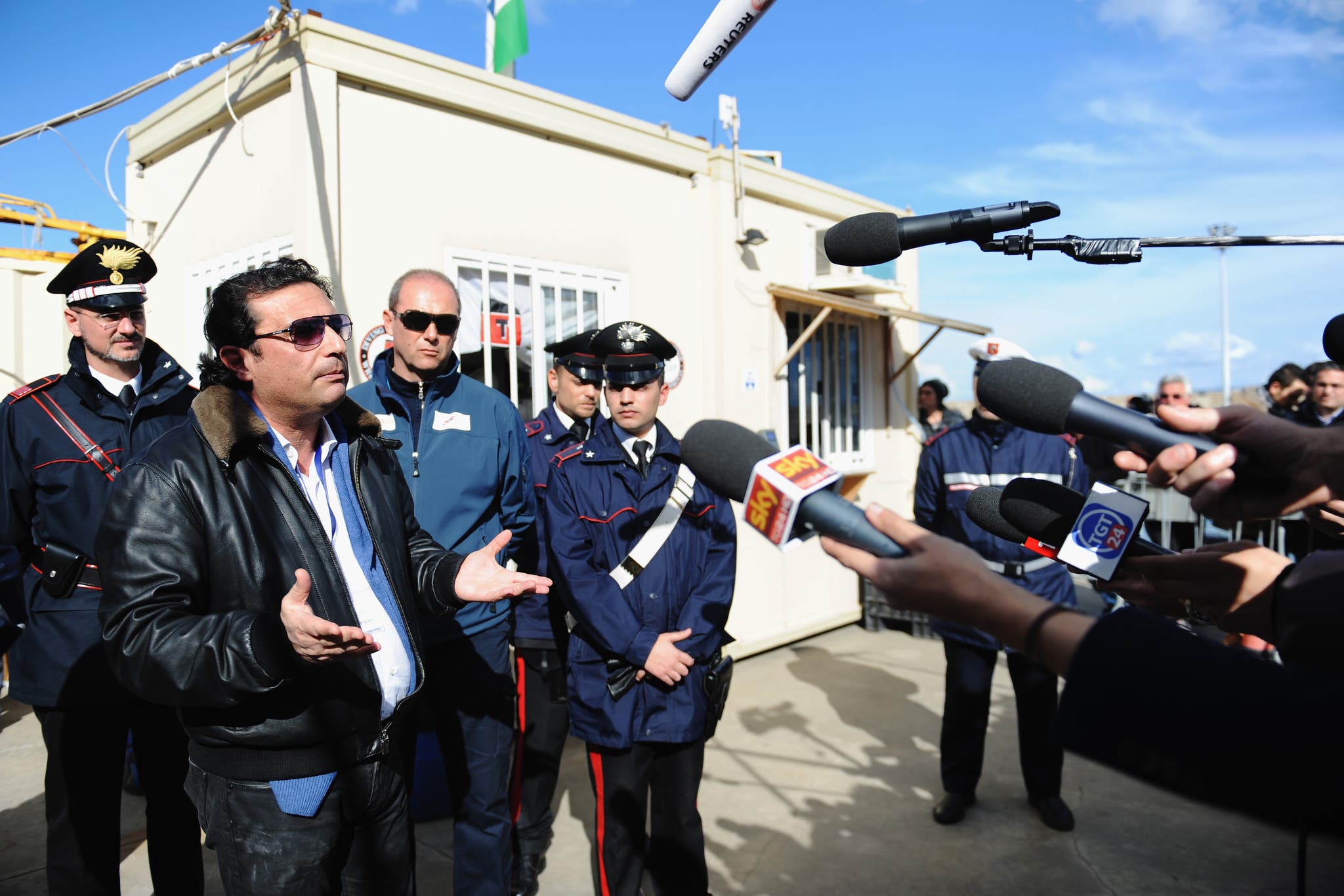
Evidence introduced in Schettino’s trial suggests that the safety of his passengers and crew wasn’t his number one priority as he assessed the damage to the Concordia. The impact and water leakage caused an electrical blackout on the ship, and a recorded phone call with Costa Crociere’s crisis coordinator, Roberto Ferrarini, shows he tried to downplay and cover up his actions by saying the blackout was what actually caused the accident.
“I have made a mess and practically the whole ship is flooding,” Schettino told Ferrarini while the ship was sinking. “What should I say to the media?… To the port authorities I have said that we had…a blackout.” (Ferrarini was later convicted for contributing to the disaster by delaying rescue operations.)
Schettino also didn’t immediately alert the Italian Search and Rescue Authority about the accident. The impact on the Scole Rocks occurred at about 9:45 p.m. local time, and the first person to contact rescue officials about the ship was someone on the shore, according to the investigative report. Search and Rescue contacted the ship a few minutes after 10:00 p.m., but Schettino didn’t tell them what had happened for about 20 more minutes.
A little more than an hour after impact, the crew began to evacuate the ship. But the report noted that some passengers testified that they didn’t hear the alarm to proceed to the lifeboats. Evacuation was made even more chaotic by the ship listing so far to starboard, making walking inside very difficult and lowering the lifeboats on one side, near to impossible. Making things worse, the crew had dropped the anchor incorrectly, causing the ship to flop over even more dramatically.
Through the confusion, the captain somehow made it into a lifeboat before everyone else had made it off. A coast guard member angrily told him on the phone to “Get back on board, damn it!” —a recorded sound bite that turned into a T-shirt slogan in Italy.
Schettino argued that he fell into a lifeboat because of how the ship was listing to one side, but this argument proved unconvincing. In 2015, a court found Schettino guilty of manslaughter, causing a shipwreck, abandoning ship before passengers and crew were evacuated and lying to authorities about the disaster. He was sentenced to 16 years in prison. In addition to Schettino, Ferrarini and Rusli Bin, the other people who received convictions for their role in the disaster were Cabin Service Director Manrico Giampedroni, First Officer Ciro Ambrosio and Third Officer Silvia Coronica.

Sign up for Inside History
Get HISTORY’s most fascinating stories delivered to your inbox three times a week.
By submitting your information, you agree to receive emails from HISTORY and A+E Networks. You can opt out at any time. You must be 16 years or older and a resident of the United States.
More details : Privacy Notice | Terms of Use | Contact Us
Secret’s out! Amazon announces the official dates for Prime Day — we have early deals to shop now
- Share this —

- Watch Full Episodes
- Read With Jenna
- Inspirational
- Relationships
- TODAY Table
- Newsletters
- Start TODAY
- Shop TODAY Awards
- Citi Concert Series
- Listen All Day
Follow today
More Brands
- On The Show
- TODAY Plaza
10 years later, Costa Concordia survivors share their stories from doomed cruise ship
Ten years after the deadly Costa Concordia cruise line disaster in Italy, survivors still vividly remember scenes of chaos they say were like something straight out of the movie "Titanic."
NBC News correspondent Kelly Cobiella caught up with a group of survivors on TODAY Wednesday, a decade after they escaped a maritime disaster that claimed the lives of 32 people. The Italian cruise ship ran aground off the tiny Italian island of Giglio after striking an underground rock and capsizing.
"I think it’s the panic, the feeling of panic, is what’s carried through over 10 years," Ian Donoff, who was on the cruise with his wife Janice for their honeymoon, told Cobiella. "And it’s just as strong now."
More than 4,000 passengers and crew were on board when the ship crashed into rocks in the dark in the Mediterranean Sea, sending seawater rushing into the vessel as people scrambled for their lives.
The ship's captain, Francesco Schettino, had been performing a sail-past salute of Giglio when he steered the ship too close to the island and hit the jagged reef, opening a 230-foot gash in the side of the cruise liner.
Passengers struggled to escape in the darkness, clambering to get to the life boats. Alaska resident Nate Lukes was with his wife, Cary, and their four daughters aboard the ship and remembers the chaos that ensued as the ship started to sink.
"There was really a melee there is the best way to describe it," he told Cobiella. "It's very similar to the movie 'Titanic.' People were jumping onto the top of the lifeboats and pushing down women and children to try to get to them."
The lifeboats wouldn't drop down because the ship was tilted on its side, leaving hundreds of passengers stranded on the side of the ship for hours in the cold. People were left to clamber down a rope ladder over a distance equivalent to 11 stories.
"Everybody was rushing for the lifeboats," Nate Lukes said. "I felt like (my daughters) were going to get trampled, and putting my arms around them and just holding them together and letting the sea of people go by us."
Schettino was convicted of multiple manslaughter as well as abandoning ship after leaving before all the passengers had reached safety. He is now serving a 16-year prison sentence .
It took nearly two years for the damaged ship to be raised from its side before it was towed away to be scrapped.
The calamity caused changes in the cruise industry like carrying more lifejackets and holding emergency drills before leaving port.
A decade after that harrowing night, the survivors are grateful to have made it out alive. None of the survivors who spoke with Cobiella have been on a cruise since that day.
"I said that if we survive this, then our marriage will have to survive forever," Ian Donoff said.
Scott Stump is a trending reporter and the writer of the daily newsletter This is TODAY (which you should subscribe to here! ) that brings the day's news, health tips, parenting stories, recipes and a daily delight right to your inbox. He has been a regular contributor for TODAY.com since 2011, producing features and news for pop culture, parents, politics, health, style, food and pretty much everything else.

‘Love Island USA’ star Hannah Smith on why her relationship with Kendall Washington 'died out'

A 6-year-old boy drowned at his New Jersey summer camp

10 months after Lauri Carleton was killed for flying a pride flag, her family is honoring her legacy

Karen Read's murder trial: Jurors begin deliberating after closing arguments

The church I grew up in opposes IVF. Are my infertility struggles part of God’s design?

Giant pandas are heading to the US for the first time in 20 years
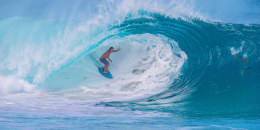
Tamayo Perry, surfing legend and ‘Pirates of the Caribbean’ actor, killed in shark attack, officials say

What to know about Bronny James ahead of the NBA draft

Florida Panthers win their first Stanley Cup, surviving Oilers’ unlikely comeback attempt

Are ‘Perfect Match’ stars Harry Jowsey and Jess Vestal still together now?
Ten years on, Costa Concordia shipwreck still haunts survivors, islanders
- Medium Text

Sign up here.
Philip Pullella reported from Rome; Additional reporting by Yara Nardi, writing by Philip Pullella; Editing by Emelia Sithole-Matarise
Our Standards: The Thomson Reuters Trust Principles. New Tab , opens new tab

World Chevron
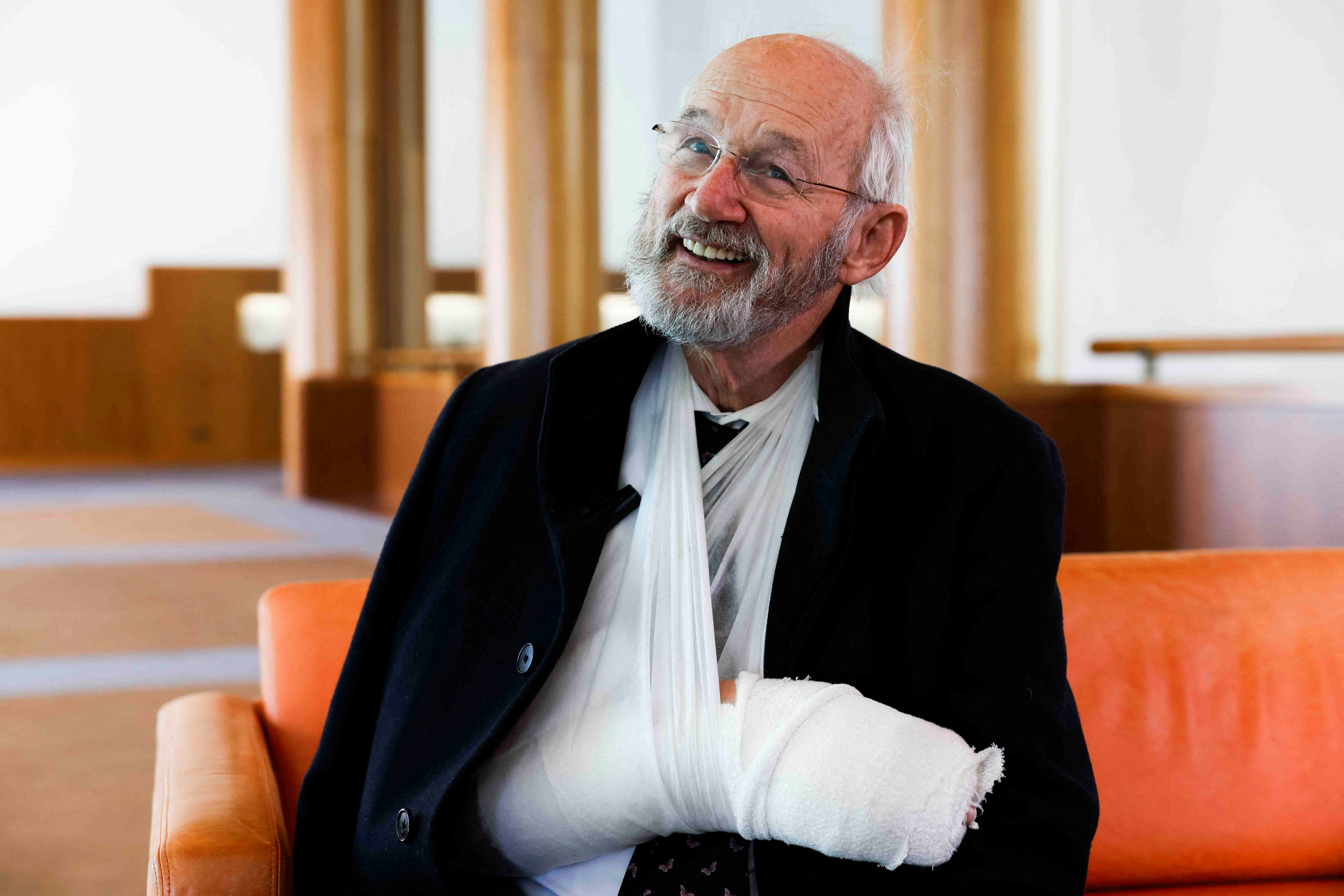
Father, awaiting Julian Assange's arrival in Australia, says he never gave up
Julian Assange's father, John Shipton, could breathe a massive sigh of relief on Wednesday after a decade-long campaign to free his son.

10 years later, Costa Concordia disaster is still vivid for survivors
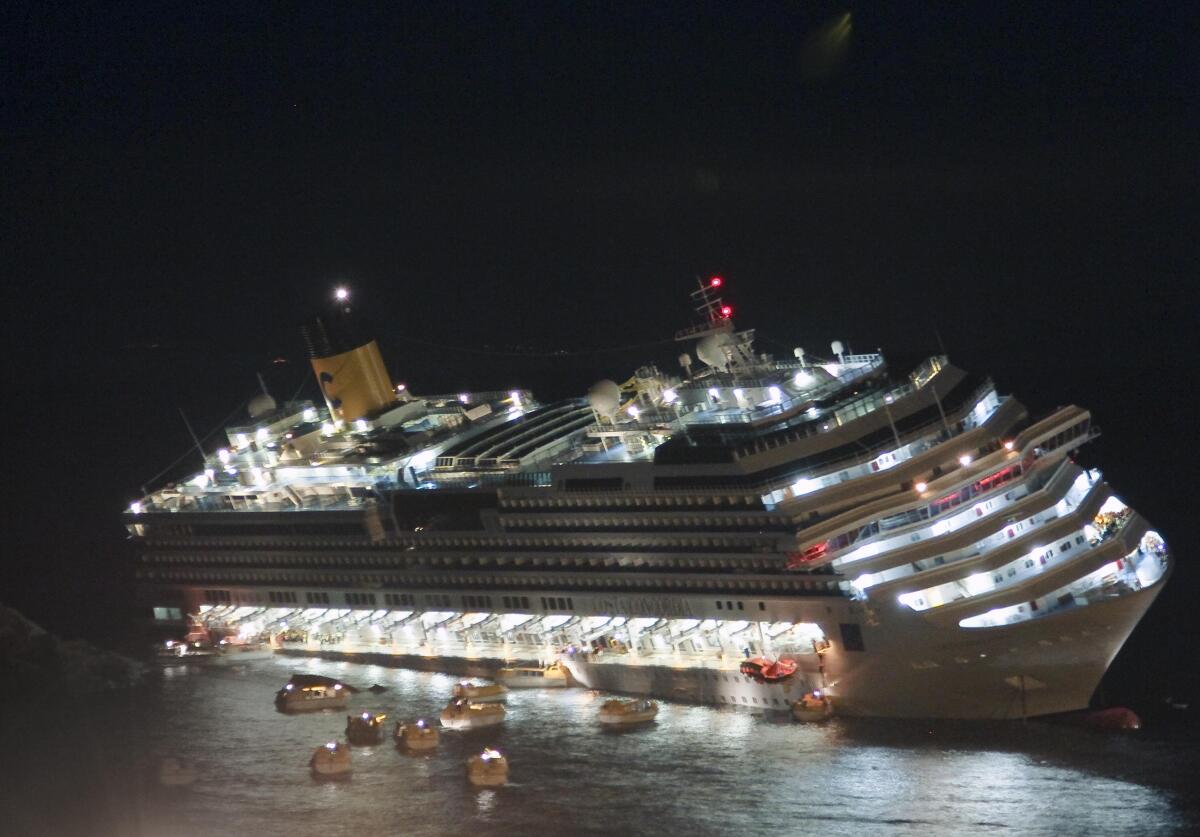
- Show more sharing options
- Copy Link URL Copied!
Ten years have passed since the Costa Concordia cruise ship slammed into a reef and capsized off the Tuscan island of Giglio . But for the passengers on board and the residents who welcomed them ashore, the memories of that harrowing, freezing night remain vividly etched into their minds.
The dinner plates that flew off the tables when the rocks first gashed the hull. The blackout after the ship’s engine room flooded and its generators failed. The final mad scramble to evacuate the listing liner and then the extraordinary generosity of Giglio islanders who offered shoes, sweatshirts and shelter until the sun rose and passengers were ferried to the mainland.
Italy on Thursday is marking the 10th anniversary of the Concordia disaster with a daylong commemoration that will end with a candlelit vigil near the moment the ship hit the reef: 9:45 p.m. on Jan. 13, 2012. The events will honor the 32 people who died that night, the 4,200 survivors, but also the residents of Giglio, who took in passengers and crew and then lived with the Concordia’s wrecked carcass off their shore for another two years until it was righted and hauled away for scrap.
“For us islanders, when we remember some event, we always refer to whether it was before or after the Concordia,” said Matteo Coppa, who was 23 and fishing on the jetty when the darkened Concordia listed toward shore and then collapsed onto its side in the water.
“I imagine it like a nail stuck to the wall that marks that date, as a before and after,” he said, recounting how he joined the rescue effort that night, helping pull ashore the dazed, injured and freezing passengers from lifeboats.
The sad anniversary comes as the cruise industry, shut down in much of the world for months because of the coronavirus pandemic, is once again in the spotlight because of COVID-19 outbreaks that threaten passenger safety. The U.S. Centers for Disease Control last month warned people across-the-board not to go on cruises , regardless of their vaccination status, because of the risks of infection.

A dozen passengers on cruise ship test positive for coronavirus
The passengers, whose infections were found through random testing, were asymptomatic or had mild symptoms, according to the Port of San Francisco.
Jan. 7, 2022
For Concordia survivor Georgia Ananias, the COVID-19 infections are just the latest evidence that passenger safety still isn’t a top priority for the cruise ship industry. Passengers aboard the Concordia were largely left on their own to find life jackets and a functioning lifeboat after the captain steered the ship close too shore in a stunt. He then delayed an evacuation order until it was too late, with lifeboats unable to lower because the ship was listing too heavily.
“I always said this will not define me, but you have no choice,” Ananias said in an interview from her home in Los Angeles. “We all suffer from PTSD. We had a lot of guilt that we survived and 32 other people died.”
Prosecutors blamed the delayed evacuation order and conflicting instructions given by crew for the chaos that ensued as passengers scrambled to get off the ship. The captain, Francesco Schettino, is serving a 16-year prison sentence for manslaughter, causing a shipwreck and abandoning a ship before all the passengers and crew had evacuated.
Ananias and her family declined Costa’s initial $14,500 compensation offered to each passenger and sued Costa, a unit of U.S.-based Carnival Corp., to try to cover the cost of their medical bills and therapy for the post-traumatic stress they have suffered. But after eight years in the U.S. and then Italian court system, they lost their case.
“I think people need to be aware that when you go on a cruise, that if there is a problem, you will not have the justice that you may be used to in the country in which you are living,” said Ananias, who went onto become a top official in the International Cruise Victims association, an advocacy group that lobbies to improve safety aboard ships and increase transparency and accountability in the industry.
Costa didn’t respond to emails seeking comment on the anniversary.
Cruise Lines International Assn., the world’s largest cruise industry trade association, stressed in a statement to the Associated Press that passenger and crew safety were the industry’s top priority, and that cruising remains one of the safest vacation experiences available.
“Our thoughts continue to be with the victims of the Concordia tragedy and their families on this sad anniversary,” CLIA said. It said it has worked over the past 10 years with the International Maritime Organization and the maritime industry to “drive a safety culture that is based on continuous improvement.”
For Giglio Mayor Sergio Ortelli, the memories of that night run the gamut: the horror of seeing the capsized ship, the scramble to coordinate rescue services on shore, the recovery of the first bodies and then the pride that islanders rose to the occasion to tend to the survivors.
Ortelli was later on hand when, in September 2013, the 115,000-ton, 1,000-foot long cruise ship was righted vertical off its seabed graveyard in an extraordinary feat of engineering. But the night of the disaster, a Friday the 13th, remains seared in his memory.
“It was a night that, in addition to being a tragedy, had a beautiful side because the response of the people was a spontaneous gesture that was appreciated around the world,” Ortelli said.
It seemed the natural thing to do at the time. “But then we realized that on that night, in just a few hours, we did something incredible.”
More to Read

Captain gets four-year sentence for Conception boat disaster
May 2, 2024
More than 60 people drown after a migrant vessel capsizes off Libya, U.N. says
Dec. 17, 2023
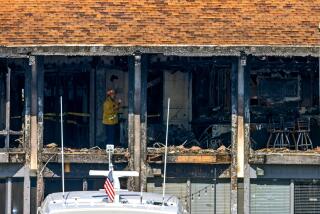
‘Nothing left’: After California Yacht Club fire, residents mourn loss of a beloved spot
Dec. 15, 2023
Start your day right
Sign up for Essential California for news, features and recommendations from the L.A. Times and beyond in your inbox six days a week.
You may occasionally receive promotional content from the Los Angeles Times.
More From the Los Angeles Times
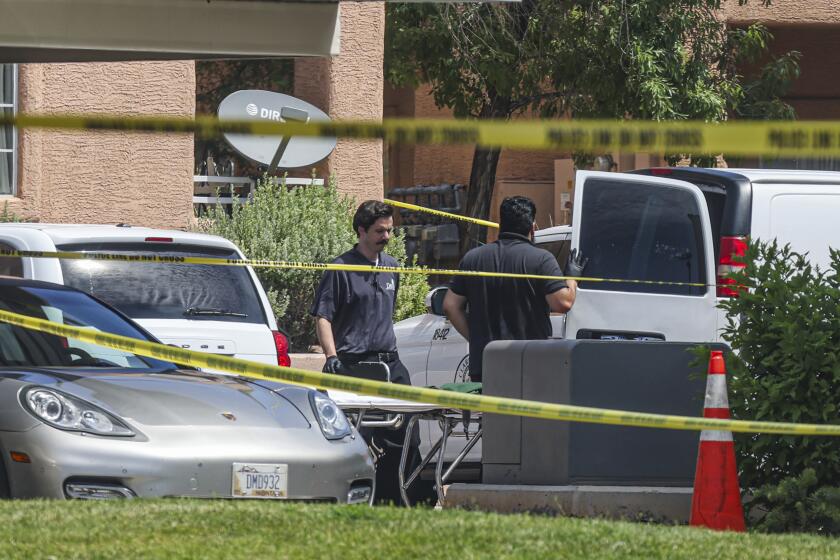
World & Nation
Suspect is dead after shootings near Las Vegas leave 5 people dead, teen injured, police say
June 25, 2024
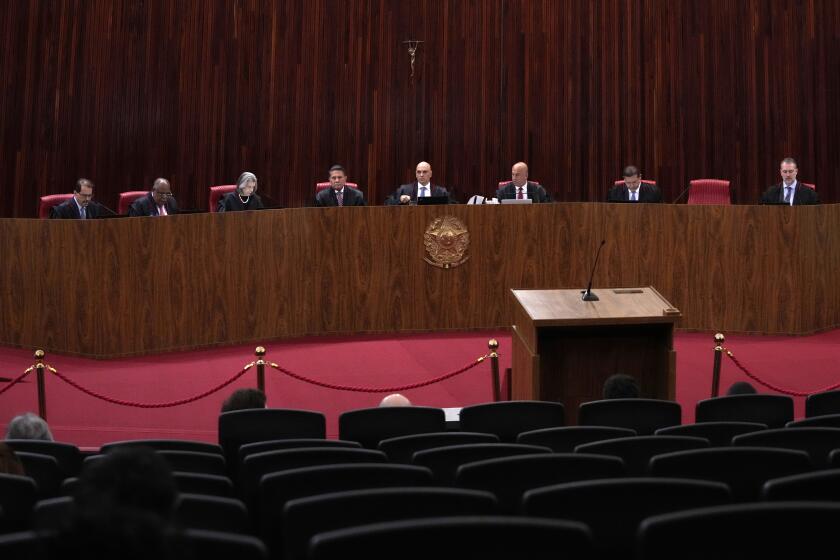
Brazil’s Supreme Court decriminalizes possession of marijuana for personal use

Brazilian police official wins crucial backing to become the next head of Interpol

Rail company botched decision to blow open vinyl chloride cars in Ohio, NTSB says
- Dominican Republic
- Riviera Maya
- New York City
- All Destinations >
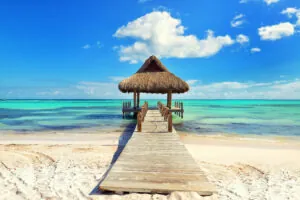
- All-Inclusive
- Kid-Friendly
- All Collections >
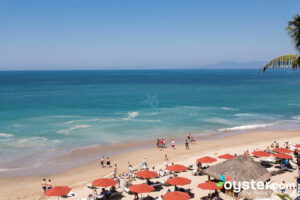
- What's New
- Rookie Mistakes
- Luxury for Less
- Destination Cheat Sheets
- Travel Safety
- Travel Tips
- Hidden Gems
- Steamy Travel
- Health and Wellness Travel
- All Stories >

- Adults Only Travel
By proceeding, you agree to our Privacy Policy and Terms of Use .
The 9 Worst Cruise Ship Disasters

The Titanic may be the most famous ship disaster, but surprisingly, it’s not even close to being the deadliest wreck that ever occurred on a luxury liner. If you’re trying to dissuade someone from taking a cruise, you should show them this list of maritime misadventures presented in no particular order. Disclaimer: The vast majority of cruises sail without incident and are safe and not filled with poop. (Oh yeah, we’ll get there.) Get your plate ready for a buffet of high-seas horror.
1. RMS Titanic

F.G.O. Stuart (1843-1923) {{PD-old}} /Wikimedia Commons
The many experts in 1912 who considered the Titanic “unsinkable” were to be proven wrong on the boat’s maiden voyage from Southampton to New York City. Thomas Andrews had designed the ship to withstand head-on collisions and rammings from other ships. However, the North Atlantic Ocean iceberg that took down the vessel scraped through five of its 16 watertight compartments. The boat would have reportedly remained afloat if it had only gone through four. Like other systems at the time, the Titanic's lifeboats were designed to shepherd passengers to nearby rescue ships, not take them to shore. Unfortunately, help was many hours away in the wee hours of April 15 when the boat was going under. The poor crew organization also caused many lifeboats to leave the ship at far less than full capacity. Plus, they only had enough boats for about a third of the onboard. As a result, more than 1,500 people died — either on the ship or in the icy waters, waiting for help. A recent theory suggests a fire that started in the hull before the ship set sail weakened the vessel’s steel walls, making it susceptible to an iceberg that normally wouldn’t have caused as much damage.
2. Eastern Star’s Dongfang zhi Xing
In 2015, Dongfang zhi Xing was traveling on the Yangtze River in China when a thunderstorm struck, and the boat capsized. Ships in the area were warned that bad storms were coming and told to take precautions, but it is unclear if the Dongfang zhi Xing ever received the warnings and continued to sail. The ship was met with winds of up to 72-85 mph, and ultimately, a downburst (a strong downward wind) caused the ship to capsize and sink. Out of the 454 people on board, only 12 survived, making the total number of dead 442.
3. Carnival Cruise Line’s Triumph

DVIDSHUB/Flickr
A generator fire on Carnival Cruise Lines’s Triumph (now called Carnival Sunrise) left the ship powerless, and a late-night comedy punchline was born: “The Poop Cruise.” Without working bathrooms, passengers were forced to drop their payloads into red “hazardous waste” bags and stuff them into garbage cans left in the hall. Passengers described carpets soaked with more than two inches of raw sewage. News reports described the scene as a “shanty town” and a “new circle of hell.” One passenger reportedly called her husband and told him that their 12-year-old daughter had Skittles for breakfast. It took four days for the Triumph to be towed from the Gulf of Mexico to Mobile, Alabama, where it was possible to smell the ship from the dock. Later, 31 passengers claimed long-lasting damage, including PTSD, and sued. After the verdict, 27 of them split $118,000, many earning less than $3,000 (minus legal fees) for their troubles.
4. Costa Concordia

European Commission DG ECHO/Flickr
One of the biggest passenger ships ever wrecked, the Costa Concordia had 17 decks, six restaurants, a three-story theater, and enough room for 4,200 vacationers. On January 13, 2012, Captain Francesco Schettino agreed to a request by the ship’s chief maître d’, Antonello Tievoli, and sailed closer to Isola del Giglio than normal. Why? Tievoli, a native of Giglio, wanted to impress and “salute” local residents. Unfortunately, Captain Schettino turned off the ship’s alarm for the computer navigation system and later admitted he thought he knew the waters well enough to navigate by sight. However, the ship’s first mate testified that the captain had left his glasses in his cabin and requested them. The Costa Concordia struck an underwater rock, capsized, and sank, killing 32 passengers. Schettino’s worst maritime sin? He abandoned the ship with 300 passengers still onboard. A Coast Guard officer in contact with the ship at the time of the sinking claimed he told Schettino to get back onboard. After being convicted of manslaughter and pursuing several appeals, Schettino only started his 16-year prison sentence in May of 2017. The salvage effort (the ship was completely dismantled) was the largest effort of its kind.
5. SS Eastland
Launched in 1903, the SS Eastland was a passenger ship based in Chicago and used for tours. Although the ship had noted listing (tilting) since its inception and some measures had been taken to rectify this, the SS Eastland was still suffering from being top-heavy when boarding for a cruise in 1915. The ship was meant to sail from Chicago to Michigan City, Indiana, carrying workers from Western Electric Company’s Hawthorne Works for a picnic. On July 24, 2,572 passengers boarded, with many congregating on the open upper decks. While still docked, the ship began to list to the port side, and reportedly, at some point, more passengers rushed to the port side, causing the ship to roll onto its side completely. Despite the river’s bottom being just 20 feet below and the shore being about the same distance, a total of 844 passengers and crew members died, including 22 entire families.
6. Royal Pacific
When the Royal Pacific was first launched as a passenger ferry in 1964, it could carry 250 passengers, 91 cars, and 16 trucks. Sold and converted into a cruise ship in the late 1980s, the boat’s maiden voyage was a two-night “cruise to nowhere” from Singapore and sailed by Phuket, Malacca, and Penang before returning home. At around 2 a.m., when most passengers were asleep, the crew heard a loud bang, and the plates on the buffet table crashed to the ground. A Taiwanese trawler, Terfu 51, had accidentally rammed the ship, leaving a six-foot gash in the side. As the trawler pulled away, there was a deafening sound of metal scraping against metal. The PA system wasn’t working properly on the boat, but the safety officer ran downstairs to survey the damage. When he returned, he told everyone to put on their life jackets. Reports vary about how many passengers were impacted — most tallies number 30 dead and 70 injured. Several passengers also complained that a mix of Greek-, English- and Mandarin-speaking crew members led to few people understanding what anyone was saying.
7. SS Morro Castle
The story of the SS Morro Castle is so dreadful it’s surprising no Hollywood producer has turned the tale into a horror movie. Director Fritz Lang collaborated on a script about the tragedy, and named it “Hell Afloat” (which is a pretty apt description), but it was never made. Between 1930 and 1934, the SS Morro Castle regularly shuttled 480-plus passengers between Havana and New York. While onboard, there was no Depression to worry about and no Prohibition, which meant plenty of booze-filled partying. However, the September 1934 return sail from Cuba to the Big Apple seemed cursed. On September 7, Captain Robert Wilmott complained of stomach trouble after eating dinner and retired to his cabin, where he later died of an apparent heart attack. Chief Officer William Warms took command, and a few hours later, around 3 a.m. on September 8, a fire started in one of the storage lockers. The crew’s attempts to fight the fire were haphazard and inadequate, and soon, the blaze couldn’t be contained. Many crew members abandoned the ship, leaving confused passengers to fend for themselves in the dark, smoky hallways. Some jumped from the deck to their death in the water. Rescuers lined up on the Jersey Shore to meet the lifeboats carrying passengers. The next morning, the burning, black hull of the SS Morro Castle ran aground at Asbury Park, New Jersey. Of the 549 people aboard the cruise, 86 guests and 49 crew members died.
8. Royal Caribbean’s Explorer of the Seas
A cruise can be an oasis of calm in rough waters, but it’s also a petri dish of disease where viruses ricochet from passenger to passenger. In 2014, the Royal Caribbean’s Explorer of the Seas cruise from New Jersey to the Caribbean earned the dubious honor of being the ship with more sick passengers than any other boat trip since the Centers for Disease Control and Prevention started keeping statistics more than 20 years ago. An estimated 700 passengers and crew members were sick at some point. Most cruise ship illnesses result from norovirus, that causes inflammation of the stomach and large intestines and regular trips to the “head.” If you’re wondering how to stay healthy on a cruise with sick passengers, plenty of handwashing (and avoiding ill people) is key. Bugs pass quickly through contact with ship railings, bathroom doors, and buffet food.
9. MTS Oceanos
Built by a French company and first launched in 1952, the MTS Oceanos was purchased by a Greek company in 1976. On August 3, 1991, Oceanos set sail for East London, South Africa, and headed north for Durban, led by Captain Yiannis Avranas. The ship reportedly headed into 40-knot winds and 30-foot swells, and thus, the typical sail-away outdoor deck party with British entertainers Moss and Tracy Hills was moved to an indoor lounge. The sea conditions worsened that night, leading to the ship rolling from side to side, and eventually, an explosion was heard due to a lack of repairs for the waste disposal system. This all led to the ship losing power and water filling its generator room, so the generators were shut down and the ship was led adrift. A distress call was sent and answered by numerous South African helicopters and a Dutch container ship. Shockingly, the captain and many crew members were among the first to be airlifted to shore, leaving the entertainment staff to coordinate the rescue efforts and help passengers to safety. All 571 passengers and crew members were saved by the time the ship sank nose-first into the sea.
Costa Concordia Victims' Last Moments Revealed
The story of a passenger who drowned after giving up his seat in a lifeboat features in a report released by prosecutors.
By Nick Pisa, Sky Reporter
Tuesday 5 March 2013 12:46, UK
Please use Chrome browser for a more accessible video player
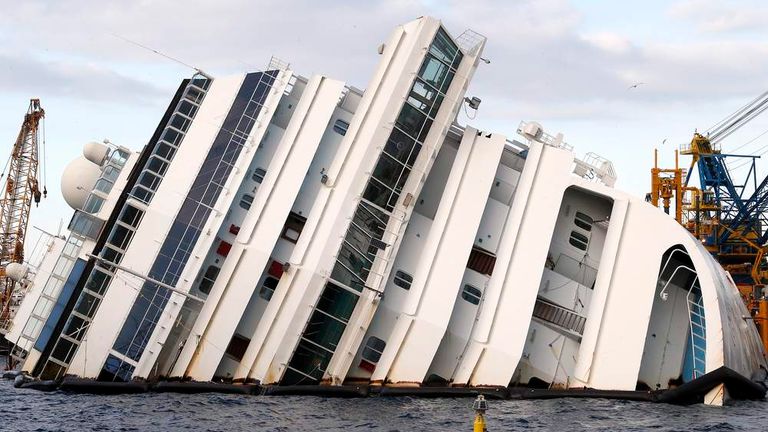
Details of the final moments of the 32 people who died in the Costa Concordia cruise ship tragedy have emerged in a prosecution report.
The 60-page document makes up the official request to have captain Francesco Schettino - who was in charge at the time - sent for trial.
He is accused of multiple manslaughter, causing a disaster, failing to inform authorities of what had happened and abandoning ship while dozens of passengers were still onboard.
More than 4,000 passengers and crew were onboard the doomed Costa Concordia when it struck rocks after Schettino allegedly changed course in order to carry out a sail-by salute of a Mediterranean island to impress holidaymakers.

The 70-metre gash allowed water to pour in and the ship eventually capsized and came to rest on its side at a location known as Seagull Point, just outside the harbour on the island of Giglio in January last year, hours into a seven-day cruise.
The chaotic scenes of panic and disorganisation that gripped the ship as it started to sink are evident throughout the report.
In one part, Francecso Verusio relives the moment when the youngest victim of the disaster, five-year-old Dayana Arlotti, and her father, William, drowned.
More from World

Julian Assange formally admits spying charge as part of a plea deal with US authorities

North Korea fires potential hypersonic missile towards sea, South Korea says

Evan Gershkovich: US journalist seen with shaved head before start of spying trial in Russia
Mr Verusio wrote that they died ''because they were unable to find any space in a lifeboat on deck four, on the left-hand side, and they were then directed to the right-hand side by crew members on the same deck but as they were crossing the inside corridor ... they fell into a hole that had been created when the ship rolled onto its right side.
"They dropped into an area that was already flooded and they died from drowning," he added.
Other stories include that of bartender Erika Fani Soria Molinala, who fell from a lifeboat as it pulled away from the Concordia but as she was not wearing a lifejacket she was dragged underwater from the current created as the Concordia tilted on its side.
It also emerged that holidaymaker Maria D'Introno - whose body has yet to be recovered - was told to get out of a lifeboat because it was too full and the tilt of the ship made it impossible to launch safely.
She was later seen terrified by the edge of the ship, jumping into the water without a lifejacket despite not being able to swim.
The last moments of musician Giuseppe Girolamo are described in another section of the report.
It emerged he had been directed to the right-hand side of the boat to get into a lifeboat and had actually got into one when he decided to give up his place - only to later drown.
The prosecution report also details how Schettino was distracted by the ''inopportune presence of unauthorised persons'' on the bridge of the Concordia, including several crew members and passenger hostess Domnica Cemortan - who was seen enjoying dinner with the captain minutes before the ship struck the rocks.
It also details how Schettino was distracted as he was speaking on the telephone while he was ''in close proximity to the coast in a dangerous situation and with the helm under manual control".
It goes on to list 157 passengers who are suffering from post-traumatic stress following the disaster.
Schettino, 52, has insisted he is innocent of all charges and that the rocks were not marked on his charts. He says he should be thanked as his actions in steering the ship back towards the port at Giglio saved hundreds of lives.
However, he was ridiculed by the world's media after it emerged he had told coastguards he "tripped and fell" into a lifeboat as the Concordia began to list to one side, while recordings later emerged of him refusing orders to get back onboard and co-ordinate the rescue efforts.
Some other crew members also face charges, as do management figures from the company Costa Cruises, which owns the ship that is still lying on its side and not expected to be removed until September at the earliest.
The initial part of the trial is expected to last a week and once again will take place in a theatre in the town of Grosseto.
Prosecutors have also requested the indictment of five other crew members, including two officers Ciro Ambrosio and Silvio Coronica and the Concordia's helmsman Jacob Rusli.
In an unusual move, Mr Verusio has posted details of the case on a Facebook site in various languages and invited those who may have a claim to contact him.
It has also emerged that Costa Cruises asked for a plea-bargaining agreement, which would see them pay a fine of one million euros. They insist Schettino is solely to blame.
- Related Stories
- Costa Concordia Shipwreck Anniversary Service
- Costa Concordia To Be Removed By September
- Costa Concordia: Stupid Tourists Rescued

10 Major Cruise Ships And Passenger Vessels That Sank
The Titanic might seem the worst passenger ship accident. However, many historic cruise ships met the same fate, though they were not as famous as the RMS Titanic. The earliest cruise ships were constructed in the 1850s but gained prominence after the World Wars ended when vacationing on the seas seemed attractive.
Cruise ships were also constructed before that and targeted the affluent section of society. Also, cruise voyages in the 19th and 20th centuries were fraught with many dangers compared to present-day journeys, which have become relatively safer, thanks to advancements in maritime technologies.
However, one commonality remains. Cruise voyages are as thrilling and exciting as they were in their bygone days. This article will enlighten you about the 12 major cruise ships that sank.
1. The Unfateful RMS Titanic
The most infamous cruise ship accident has to be the RMS Titanic. The Olympic-Class Ocean liner was owned by White Star Line and built in Northern Ireland. It was the largest passenger ship of its time, designed by Thomas Andrews, capable of carrying over 3000 people.
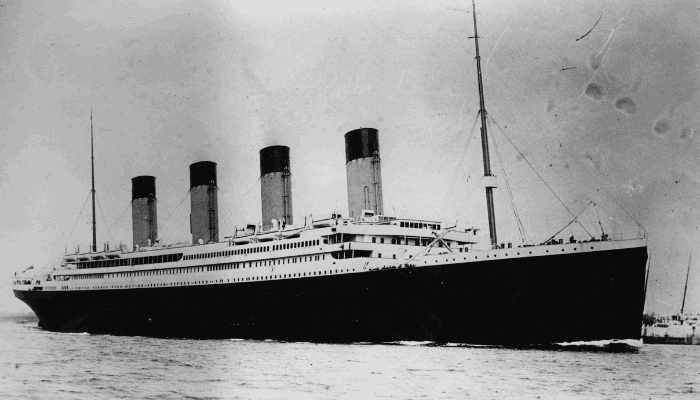
It was called unsinkable due to its 16 watertight compartments that could be closed in case of a collision. Sadly, the ship sank from Southampton to New York on its first voyage. It hit a massive iceberg in April 1912, near Newfoundland, Canada, and drowned three hours later, consuming 1500 of the 2208 people onboard. The chilly waters of the North Atlantic killed everyone from hypothermia before help could arrive.
Directed by James Cameron, the movie released in 1997 immortalized the ship disaster. The Titanic was almost 270 m long and 28.042 m broad. It had nine decks and a gross tonnage of 46,328 tonnes. It was equipped with only 20 lifeboats, enough for 1,178 passengers. Had there been more life crafts, precious lives could have been saved.
2. The Mighty, Costa Concordia
Costa Concordia sank due to a small mistake of the captain and one of the officers. It was a magnanimous passenger ship containing 17 decks, a three-storeyed theatre, swimming pools, gymnasiums, restaurants, and much more. The ship could accommodate over 4000 people.
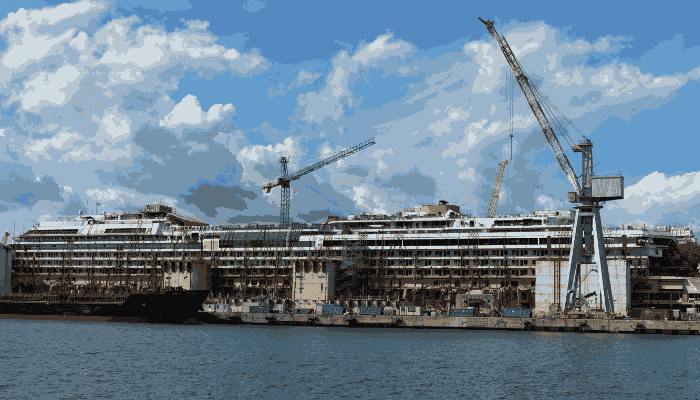
According to investigation reports, the vessel hit an underwater rock when it sailed pretty close to the shore of Isola del Giglio island on 13 January 2012. Captain Francesco Schettino closed the computer navigation alarm since he thought he could navigate the waters himself. Unfortunately, he left his glasses in his cabin, and the damage had been done by the time he got them.
The vessel capsized and sank near Tuscany. Despite the six-hour rescue operation, 34 people died. What’s shocking is that the captain abandoned the ship while 300 passengers were onboard, despite the Coast Guard Officer’s attempt to dissuade him. He was convicted of manslaughter and got a 16-year prison sentence in 2017.
3. The Graceful, MS Estonia
Cruise ferry MS Estonia was struck amidst bad weather in the Baltic Sea, which led to its demise. The ship was built in 1980 by Meyer Werft in Papenburg, Germany. It was known by many names like Viking Sally and Wasa King before 1993. It sank while sailing from Tallinn to Stockholm in September 1994.
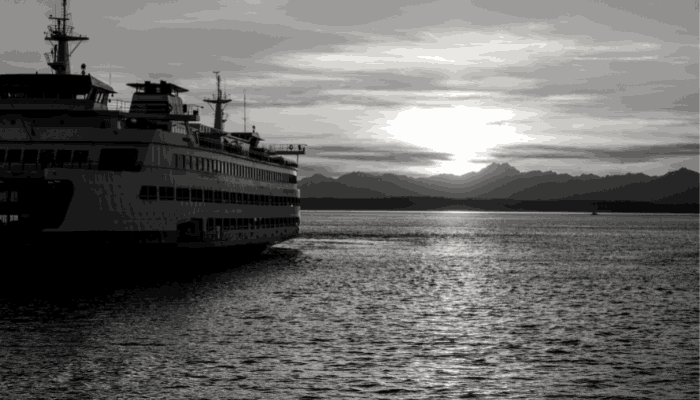
According to reports, it sank as its bow door locks couldn’t open during the storm, with strong winds lashing at a speed of 35 to 45 miles per hour. Hence, the ship tilted to the starboard side and later drowned completely due to excessive flooding on the car deck. The ship surged in an hour and took 852 people to the seabed. Only 137 passengers survived and were rescued.
MS Estonia was 155.43 m long and 24.2 m wide, with a 5.5 m draught and 15,598 gross tonnages. It had 9 decks and 10 lifeboats which were not enough for 2000 people. It could also carry over 410 cars.
4. RMS Lusitania
The German attack on Cruise Ship RMS Lusitania in 1915 was one of the main reasons behind the entry of the US into the First World War. It was hit as a naval vessel since it also contained military weapons for Britain.
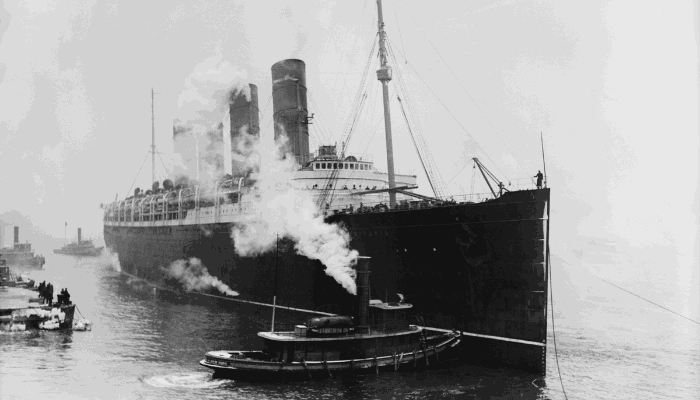
Military Submarine U-20 attacked the cruise while traveling to Liverpool from New York. Launched in 1906, the vessel was constructed by Jon Brown and Corporation and operated by Cunard Company.
The humongous steamship was the largest and most luxurious vessel at that time. It measured almost 240 m lengthwise and 27 m breadthwise, with a 10.2 m draft. The 31,550-tonne ship had 10 decks and a maximum sailing speed of 26.3 knots. It could easily carry 2160 people and over 800 crew. When it sank, 1201 people lost their lives, most Americans.
5. SS Andrea Doria
The SS Andrea Doria went down not because of rough seas or striking an iceberg or underwater formations. Instead, it collided with another passenger vessel called Stockholm due to misreading the radar. Hence, it is remembered as the world’s major radar-caused collision. The incident could not be averted as thick fog barred visibility.
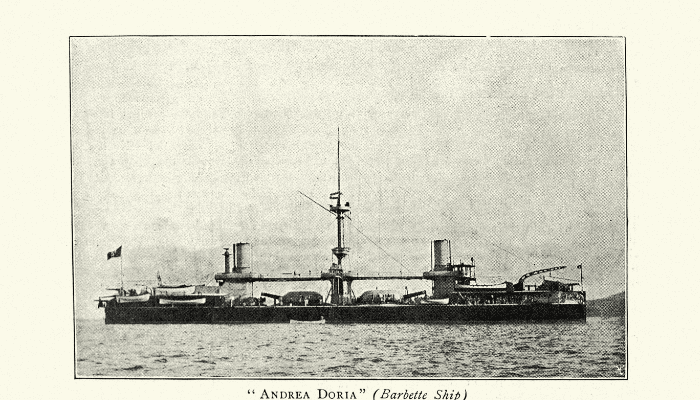
The disaster occurred in July 1956 off the coast of Nantucket, Massachusetts, when the liner was sailing to New York. Hit under the starboard bridge, it was engulfed by waves after 11 hours which gave nearby vessels enough time to respond to its SOS call. Over 50 people died, mostly due to the impact, and over 1650 were rescued.
Owned by Italian Line, it was constructed for a whopping 30 million US dollars. The 212 m long ship had 10 decks and powerful steam turbines, enabling it to attain a maximum speed of 23 knots.
6. SS Eastland
This passenger ship used for touring killed 844 people while it was docked in a port on the Chicago River on 24 July 1915. The vessel rolled over to its starboard side and submerged in water, trapping most passengers inside. It is one of the greatest ship accidents recorded in the history of the Great Lakes.
The accident occurred while the 2500 people were embarking on the vessel, preparing to cruise through Michigan. The possible causes of this disaster were structural flaws in its design, overloading, and inadequacy of the ballast tanks.
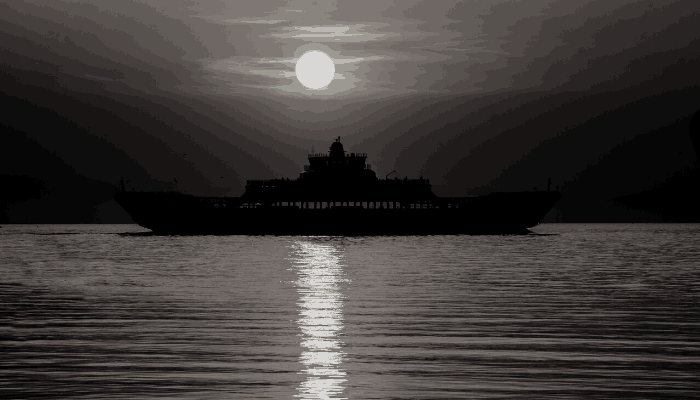
Later it was salvaged and handed over to the US Navy, which restored and modified it. It became a gunboat called USS Wilmette and was used for training. It was scrapped after the second world war ended.
It was launched in 1903 by the Michigan Transportation Company. the 275 m long cruise ship was equipped with 11 lifeboats and 37 life rafts. t had a top speed of 16.5 knots.
7. RMS Empress of Ireland
Ocean Liner Empress of Ireland was carrying 1477 passengers when it struck another Norwegian vessel, the 6000-tonne Storstad, due to poor visibility in the Saint Lawrence River. More than 1000 people died in May 1914, the second biggest cruise disaster of the period, following the Titanic incident.
The cruise ship followed the North Atlantic route between Liverpool and Quebec. Though it contained 42 lifeboats, only four could be launched in water as it tilted on her starboard side, causing panic and chaos onboard the ship. The harsh cold and the inability to close its watertight doors and portholes worsened the situation.
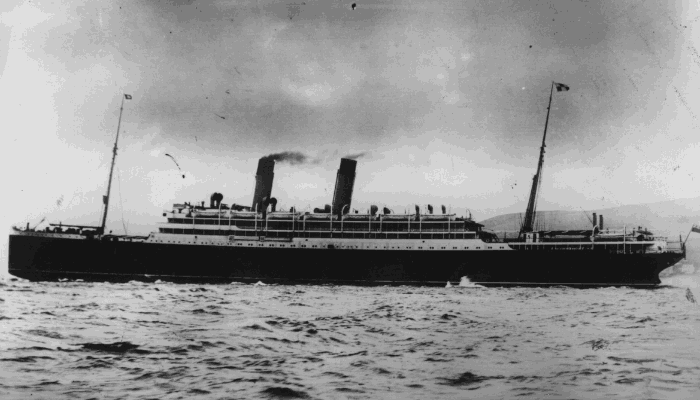
The 168 m long and 20 m broad cruise ship was launched in 1906. t was owned by the Canadian Pacific Steamship company and designed by Francis Elgar. Mirfield Shipping and Engineering were responsible for her construction.
It had 14,191 gross tonnages, two steam engines, and propellors, providing a top sailing speed of 20 knots.
8. SS Admiral Nakhimov
The collision of the cruise ship SS Admiral Nakhimov with the bulk carrier Pyotr Vasev was due to the carelessness of both the vessels’ captains. T e captain of the bulk ship failed to respond to the warning signals issued by the cruise ship. H was not present on the bridge when the vessel hit each other at 5 knots.
The cruise ship disaster occurred in 1986 in Tsemes Bay near Novorossiysk port when the vessel was en route to Sochi. I was carrying 1234 passengers, of which 423 died due to the collision and its aftermath.
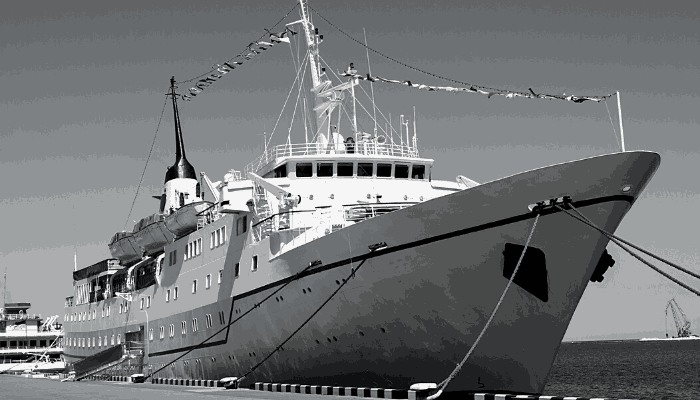
Initially named SS Berlin II, the cruise liner operated on the Crimean-Caucasian route. It was built by Bremer Vulkan and owned by Norddeutscher Lloyd.
The majestic ship had an overall length of 174 m, a 21 m beam, and 17,054 gross tonnes. It could conveniently accommodate 1125 passengers and over 300 crew members. It had a cruising speed of 16 knots.
9. SS Morro Castle
Cruise vessel SS Morro Castle was burned and sank in September 1934, claiming the lives of over 135 passengers and crew members. A total of 318 passengers and 239 crew were aboard the ship on its journey from Havanna to New York.
The accident occurred as the fire spread from its library to the decks and cabins, engulfing the superstructure in flames. I was aggravated by the ship’s decor, which was made of wood and other flammable material. The fire could not be controlled due to rough weather, incapable staff, and the ship’s design.
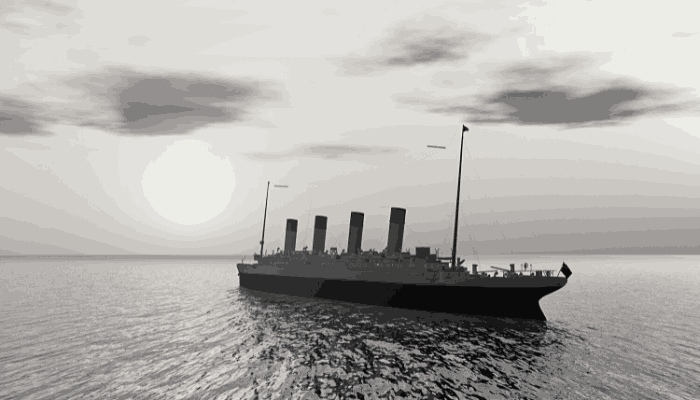
Only 12 lifeboats could be launched out of the several available on board. The decks burned the feet, and passengers leaped into ocean swells. The ship was abandoned by afternoon and the survivors were taken to the New Jersey Coast.
Interestingly, the previous evening, the ship’s captain, Robert Wilmott, died suddenly. T e Chief Officer took command and was worried about a strong northeast wind and dark clouds.
The exact cause of the fire remains a mystery; however, an overheated funnel and electric circuitry are blamed. T ose related to the incident, also speak of arson by a crew member.
It was owned by Agwi Navigation Co. and constructed in 1930. T e 155 m long cruise ship could carry 489 people apart from 240 crew at a speed of 20 knots.
10. Saint-Philibert
A small cruise ship sailing from Loire River, near the French coast, met with tragedy in June 1931. T e ship was carrying 500 people, mostly workers, and their children, from Nantes port. I exceeded its carrying capacity by 80 percent. T e danger was doubled when it encountered raging seas and rough weather, which was not precedented as it was the summer season.
The captain and crew members panicked as there was nothing to be done. O t of the 500 people onboard, only 8 survived the horrific accident. T e violent storm forced passengers to take shelter near machinery casings, which tilted the ship to its starboard side and it ultimately capsized when struck by a gigantic wave.
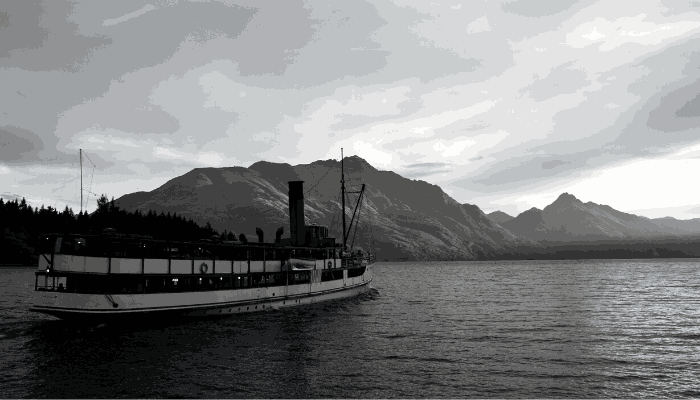
The ship was not equipped to face bad weather, and the captain and crew were not experienced. Appropriate communication equipment was also missing onboard the vessel.
A trial was conducted in 1933, the victims’ families lost the case, and the ship’s owners were set free without any penalties. The cruise vessel was 32 m long and 6.4 m broad with a gross tonnage of 189 tonnes.
You might also like to read-
- Titanic vs. Modern Cruise Ship: How Ships Have Evolved
- Costa Concordia Cruise Ship: Know The ill-fated Ship
- The Scenic Jewel Cruise Ship
- Ship Portholes: A General Overview
Top 10 Largest Cruise Ships in 2022


About Author
Zahra is an alumna of Miranda House, University of Delhi. She is an avid writer, possessing immaculate research and editing skills. Author of several academic papers, she has also worked as a freelance writer, producing many technical, creative and marketing pieces. A true aesthete at heart, she loves books a little more than anything else.
Read More Articles By This Author >
Disclaimer : The information contained in this website is for general information purposes only. While we endeavour to keep the information up to date and correct, we make no representations or warranties of any kind, express or implied, about the completeness, accuracy, reliability, suitability or availability with respect to the website or the information, products, services, or related graphics contained on the website for any purpose. Any reliance you place on such information is therefore strictly at your own risk.
In no event will we be liable for any loss or damage including without limitation, indirect or consequential loss or damage, or any loss or damage whatsoever arising from loss of data or profits arising out of, or in connection with, the use of this website.
Do you have info to share with us ? Suggest a correction

Daily Maritime News, Straight To Your Inbox
Sign Up To Get Daily Newsletters
Join over 60k+ people who read our daily newsletters
By subscribing, you agree to our Privacy Policy and may receive occasional deal communications; you can unsubscribe anytime.
BE THE FIRST TO COMMENT
Leave a reply.
Your email address will not be published. Required fields are marked *
Subscribe to Marine Insight Daily Newsletter
" * " indicates required fields
Marine Engineering
Marine Engine Air Compressor Marine Boiler Oily Water Separator Marine Electrical Ship Generator Ship Stabilizer
Nautical Science
Mooring Bridge Watchkeeping Ship Manoeuvring Nautical Charts Anchoring Nautical Equipment Shipboard Guidelines
Explore
Free Maritime eBooks Premium Maritime eBooks Marine Safety Financial Planning Marine Careers Maritime Law Ship Dry Dock
Shipping News Maritime Reports Videos Maritime Piracy Offshore Safety Of Life At Sea (SOLAS) MARPOL
WAIT! Did You Download 13 FREE Maritime eBooks?
Sign-up and download instantly!
We respect your privacy and take protecting it very seriously. No spam!
WAIT! Did You Download 12 FREE Maritime eBooks?
- Election 2024
- Entertainment
- Newsletters
- Photography
- Personal Finance
- AP Investigations
- AP Buyline Personal Finance
- AP Buyline Shopping
- Press Releases
- Israel-Hamas War
- Russia-Ukraine War
- Global elections
- Asia Pacific
- Latin America
- Middle East
- Election Results
- Delegate Tracker
- AP & Elections
- Auto Racing
- 2024 Paris Olympic Games
- Movie reviews
- Book reviews
- Financial Markets
- Business Highlights
- Financial wellness
- Artificial Intelligence
- Social Media
Defunct 1950s-era cruise ship takes on water and leaks pollutants in California river delta
This photo provided by the U.S. Coast Guard District 11 shows The Aurora, a non-operational 294-foot cruise ship moored northwest of Stockton, Wednesday, May 22, 2024, that began to sink and discharge product. A containment boom has been placed around the defunct 1950s-era cruise ship that began sinking and leaking pollution in California’s Sacramento-San Joaquin River Delta, authorities said. (California Department of Fish and Wildlife via AP)
This photo provided by the U.S. Coast Guard shows official representatives from the U.S. Coast Guard, the California Department of Fish and Wildlife and the City of Stockton respond to the sinking vessel Aurora, a non-operational 294-foot cruise ship permanently moored northwest of Stockton on Wednesday, May 22, 2024. A containment boom has been placed around a defunct 1950s-era cruise ship that began sinking and leaking pollution in California’s Sacramento-San Joaquin River Delta, authorities said. (Petty Officer 2nd Class Edward Wargo/U.S. Coast Guard via AP)
- Copy Link copied
STOCKTON, Calif. (AP) — A containment boom has been placed around a defunct 1950s-era cruise ship that began sinking and leaking pollution in California’s Sacramento-San Joaquin River Delta, authorities said.
The 294-foot (90-meter) ship permanently moored in Little Potato Slough northwest of the city of Stockton began to sink in 13 feet (4 meters) of water on Wednesday, the U.S. Coast Guard said in a statement.
A sheen was observed on the water, and containment booms were deployed around the vessel and the city’s water intake pump station, the Coast Guard said. Photographs show the stern low in the water next to the slough’s grassy embankment.
It was not immediately clear what was leaking. The Coast Guard said the vessel recently changed ownership, so details about what pollutants were on board were unknown. The San Joaquin County Sheriff’s Office said the ship was leaking diesel fuel and oil.
A wildlife care organization was notified, but no oiled wildlife had been observed, the Coast Guard said.
The ship, currently known as the MV Aurora, was built in Germany in 1955 and formerly named Wappen von Hamburg. The ship moved around the world and ended up in the delta when a California man bought it in 2008 with dreams of restoring it as a shoreline attraction.

Cruise Ship Sinking In 2023: What We Know So Far
The sinking of a cruise ship is a rare but terrifying event. In 2023, a cruise ship sank resulting in loss of lives and property. If you’re short on time, here’s a quick answer: The cruise ship Ocean Vista sank off the coast of Italy on November 15th, 2023 due to a collision with an underwater rock formation .
Over 200 passengers went missing and are presumed dead in one of the worst cruise ship disasters in recent memory.
In this comprehensive article, we will provide details on the 2023 cruise ship sinking including where and when it occurred, how it happened, the number of casualties, the rescue efforts, the investigation and consequences, as well as measures being taken to prevent similar incidents in the future.
The Sinking: What Happened
Date and location of the incident.
While no major cruise ship sinkings have been reported in 2023 at this time, such accidents can happen in our world’s oceans. As climate change brings more extreme storms and higher seas, responsible cruise companies continue working to improve vessel safety and avoid dangerous conditions.
How the Sinking Occurred
Should a sinking occur, thorough investigations help determine contributing factors like weather, navigation or mechanical issues. Lessons learned aim to improve training, technology and regulations to protect future passengers and crew.
Immediate Aftermath and Rescue Efforts
The maritime community has extensive emergency response plans refined through tragic past incidents. Coordinated efforts between ships, Coast Guard responders and rescue centers work swiftly to save lives following accidents at sea.
Casualties and Missing Persons
Number of deaths and injuries.
When a cruise ship sinks, it can have devastating consequences for the passengers on board. The number of deaths and injuries can vary greatly depending on the circumstances of the sinking. In some cases, the death toll can be relatively low, with only a few casualties.
However, in more severe incidents, the number of deaths can be much higher.
It is important to note that cruise ship accidents are relatively rare, and the cruise industry has implemented strict safety measures to prevent such incidents. However, when accidents do occur, the consequences can be tragic.
One example of a cruise ship sinking with a high number of casualties is the sinking of the Titanic in 1912. This iconic disaster resulted in the loss of over 1,500 lives. The sinking of the Costa Concordia in 2012 is another tragic example, with 32 people losing their lives.
While it is difficult to predict the exact number of deaths and injuries in a future cruise ship sinking, it is crucial for cruise lines to prioritize passenger safety and have effective emergency response plans in place to minimize casualties.
Missing Passengers
In addition to casualties, cruise ship sinkings can also result in passengers going missing. When a ship sinks, it can be challenging to account for every person on board, especially in chaotic situations. Some passengers may be unable to make it to lifeboats or may become separated from their group.
Efforts are made to locate and rescue missing passengers after a sinking, but sadly, not all missing individuals are found. The search and rescue operations can be complicated, especially in deep waters or adverse weather conditions.
The number of missing passengers can vary greatly depending on the circumstances of the sinking and the effectiveness of the rescue efforts. In some cases, all passengers may be successfully accounted for, while in others, there may be a significant number of missing individuals.
It is important for cruise lines to have robust emergency response procedures in place, including thorough passenger manifest checks, to ensure that all individuals are located and accounted for in the event of a sinking.
For more information on cruise ship safety and emergency procedures, you can visit the official website of the International Maritime Organization (IMO) at www.imo.org .
Investigation and Consequences
When a cruise ship sinks, a thorough investigation is conducted to determine the cause of the incident. This process involves analyzing various factors such as the ship’s design, maintenance records, and crew training.
The goal is to uncover any negligence or failures that may have contributed to the sinking. Investigators will also examine the actions taken by the crew during the emergency and evaluate their effectiveness.
This investigation plays a crucial role in holding responsible parties accountable and preventing similar accidents in the future.
Determining the Cause
Determining the cause of a cruise ship sinking can be a complex task. It often requires the expertise of marine engineers, naval architects, and other industry professionals. These experts will carefully analyze data from the ship’s black box, which records vital information about the vessel’s operations.
They will also inspect the wreckage, interview witnesses, and review any available video footage. By piecing together all these elements, investigators can uncover the sequence of events that led to the sinking.
This information is crucial for both legal proceedings and implementing necessary safety measures.
Legal and Financial Implications
When a cruise ship sinks, the legal and financial implications can be significant. Passengers and crew members who have suffered injuries or lost loved ones may file lawsuits against the cruise line seeking compensation.
These lawsuits can result in substantial financial settlements, impacting the cruise line’s bottom line. Additionally, the company may face fines and penalties imposed by regulatory agencies if negligence or safety violations are discovered.
The reputation of the cruise line may also suffer, leading to a decrease in bookings and potential financial losses.
Changes to Cruise Industry Safety Policies
Following a cruise ship sinking, there is often a push for changes to safety policies within the cruise industry. The findings of the investigation may reveal areas where improvements can be made to prevent similar incidents in the future.
Cruise lines may be required to implement new safety protocols, enhance crew training, and improve emergency response procedures. Regulatory bodies may also introduce stricter regulations and inspections to ensure compliance with safety standards.
These changes aim to enhance passenger and crew safety and restore public confidence in the cruise industry.
Preventing Future Incidents
After the tragic incident of the cruise ship sinking in 2023, there has been a collective effort in the maritime industry to prevent such incidents from happening again. Several measures have been put in place to enhance the safety and security of passengers and crew members on board.
Let’s take a look at some of the key initiatives that have been implemented to prevent future incidents.
Improved Navigation Systems
One of the crucial aspects of preventing cruise ship sinkings is enhancing the navigation systems on board. Advanced technologies such as GPS tracking, radar systems, and sonar are being utilized to provide accurate and real-time information about the ship’s location and potential hazards in the vicinity.
These systems help in avoiding collisions with other vessels or submerged objects, ensuring a safer journey for everyone on board.
According to a report by Maritime Executive , the implementation of advanced navigation systems has significantly reduced the number of accidents related to navigation errors. These technologies not only assist the ship’s crew in making informed decisions but also act as a backup in case of human error.
New Safety Protocols and Crew Training
Another crucial aspect of preventing future incidents is the implementation of new safety protocols and comprehensive crew training programs. Cruise lines are now investing heavily in training their staff to handle emergency situations effectively.
Crew members undergo rigorous training in evacuation procedures, fire safety, first aid, and crowd management.
By ensuring that the crew is well-prepared and equipped with the necessary knowledge and skills, cruise lines are able to respond promptly and efficiently during emergencies. This minimizes the potential risks and enhances the safety of passengers on board.
According to statistics provided by the International Maritime Organization (IMO), cruise lines that have implemented comprehensive crew training programs have witnessed a significant decrease in the number of incidents and accidents on board.
Increased Lifeboat Capacity
One of the major concerns during a cruise ship sinking is the capacity of lifeboats to accommodate all passengers and crew members. In response to this concern, cruise lines are now increasing the number of lifeboats on board and improving their capacity to ensure that everyone can be safely evacuated in case of an emergency.
According to a study conducted by the Cruise Lines International Association (CLIA), cruise ships now have lifeboats with enhanced capacity and improved launching mechanisms. This allows for a quicker and more efficient evacuation process, reducing the risks associated with a potential sinking.
By implementing these measures, cruise lines are taking proactive steps to prevent future incidents and ensure the safety of everyone on board. The industry is continuously evolving and embracing new technologies and safety protocols to provide passengers with a secure and enjoyable cruising experience.
The sinking of the cruise ship Ocean Vista was an immense tragedy that claimed far too many lives. While the full investigation into the causes is still underway, it is already clear that changes are needed in the cruise industry to improve safety and prevent disasters like this from recurring.
Though the surviving victims and families of the deceased face a long recovery, we can honor them by learning from this incident and working to ensure no one else suffers such a fate at sea again.
Jennifer Morris is an avid solo travel adventurer who founded Solo Traveller after many years of journeying on her own around the world. She has backpacked through over 50 countries across 6 continents over the past decade, striking up conversations with locals along railway platforms, learning to cook regional dishes in home kitchens, and absorbing a global perspective while volunteering with various community initiatives.
With a Masters in Tourism and Hospitality, Jennifer is passionate about responsible and meaningful travel that fosters cultural exchange. Whether trekking through the Atlas Mountains, sailing to Komodo National Park, or taking an overnight train across Eastern Europe - she is always seeking her next epic destination.
When not globetrotting, Jennifer calls Vancouver, Canada home. There she enjoys kayaking local waters, curling up with books on faraway places, and gearing up for her next solo backpacking trip. As the founder of SoloTraveller, she hopes to motivate and inform fellow solo explorers from all walks of life to take the leap into their own adventures.
Similar Posts
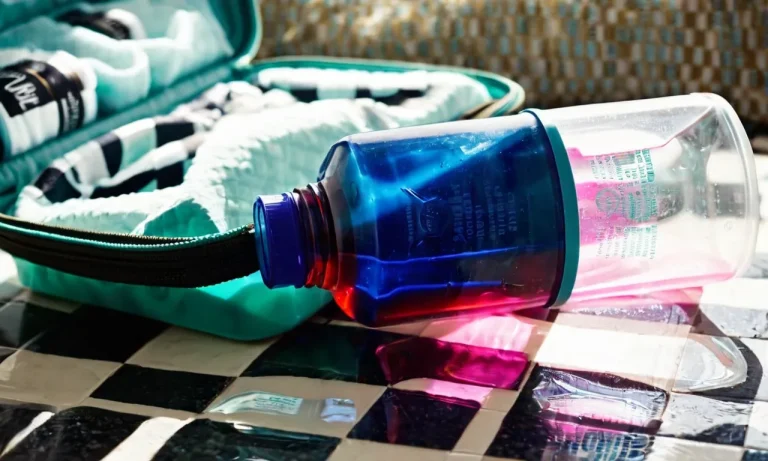
Can You Take Full Size Shampoo In A Checked Bag?
Packing for a trip can be stressful when trying to adhere to liquid restrictions for carry-on luggage. You may be wondering if you can sidestep those pesky 3-1-1 rules by packing full-size toiletries in your checked bag instead. Read on as we dive into the details around transporting everything from shampoo to mouthwash in your…

Where Does Drake Live In Miami?
Rapper Drake has long had ties to the vibrant city of Miami, Florida, frequently visiting to record music and partake in the lively nightlife scene. Rumors have swirled for years about whether or not he owns real estate in the sunshine state, particularly in the Miami area. If you’re short on time, here’s the quick…
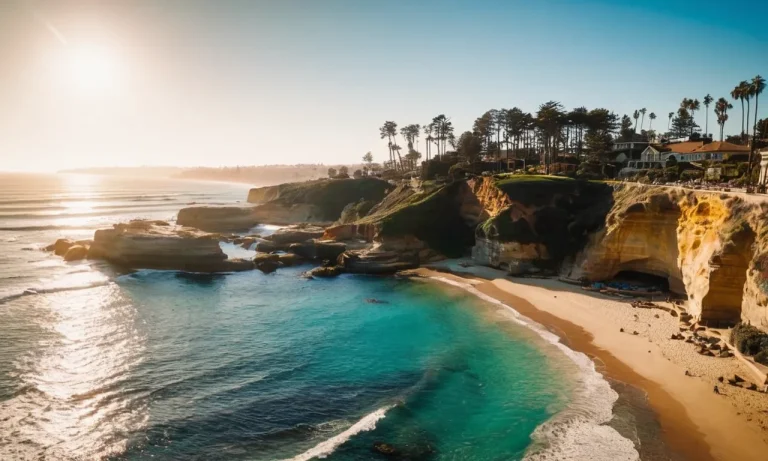
The Warmest Place In California In January
California is known for its sunny weather and mild winters, but even in the winter months there can be a wide range of temperatures across the large state. If you’re planning a January trip to California and are looking for the warmest destination, read on for suggestions on where to find the hottest weather. If…

Boeing 737 Max 8 Vs 737-700: Key Differences Explained
Let’s explore the main difference in the Boeing 737 Max 8 Vs 737-700 series. The Boeing 737 is one of the most popular commercial airliners, with over 10,000 aircraft delivered. Two of the most common variants are the 737 MAX 8 and 737-700. But what exactly sets these aircraft apart? If you’re looking for a…
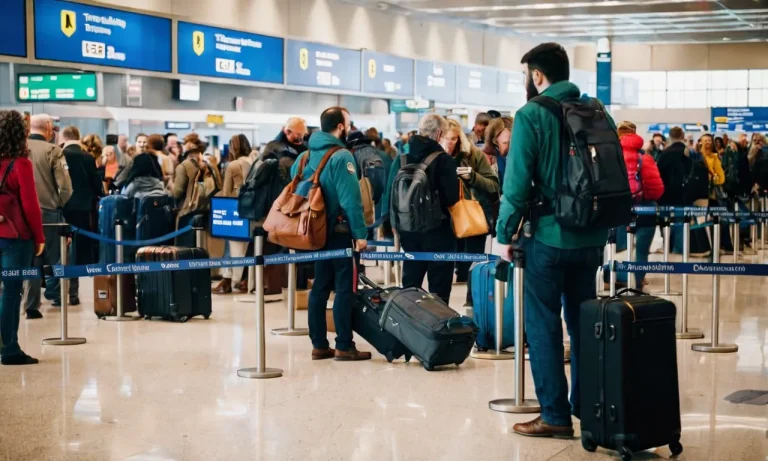
Why Is Tsa Precheck Taking So Long In 2023?
Over the past year, many travelers have noticed longer than usual wait times for TSA PreCheck lines at airports across the country. If you’re short on time, here’s a quick answer: TSA PreCheck lines are taking longer due to understaffing, budget cuts, and a major increase in travelers signing up for the program. In this…
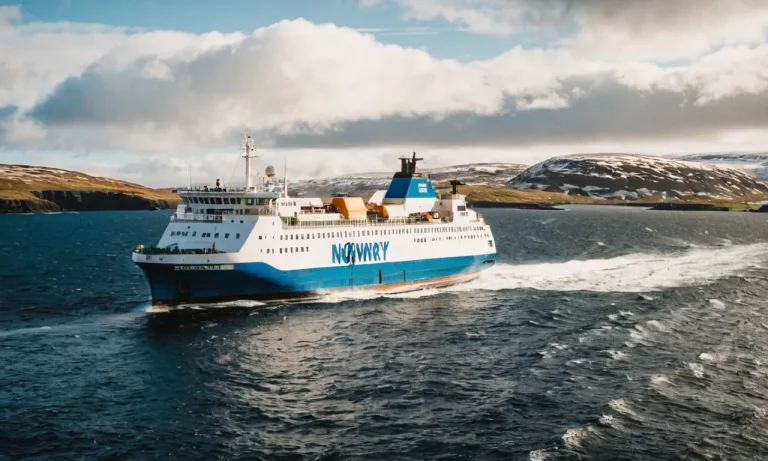
Ferry From Shetland To Norway – All You Need To Know
If you’re looking to travel by ferry from Shetland to Norway, this comprehensive guide has all the details you need to plan your trip. If you’re short on time, here’s a quick answer: There is currently no direct passenger ferry service between Shetland and Norway. However, you can reach Norway from Shetland by taking a…

National Geographic content straight to your inbox—sign up for our popular newsletters here

Pictures: 5 Cruise Ship Disasters That Changed Travel
Some good may yet come of Italy's Costa Concordia wreck. At least since Titanic, cruise accidents have sparked new safety standards.
Fuel their curiosity with your gift
Related topics.
- CRUISE SHIPS
You May Also Like

What to pack for a cruise

How to spend 10 days exploring the Croatian islands

Is the cruise industry ready for the rise in solo travel?

Fish, fire and flavours in the southern Japanese city of Kochi

In search of wildlife on a one-day cruise off the coast of Cornwall, UK
- Environment
History & Culture
- History & Culture
- History Magazine
- Race in America
- Mind, Body, Wonder
- Destination Guide
- Terms of Use
- Privacy Policy
- Your US State Privacy Rights
- Children's Online Privacy Policy
- Interest-Based Ads
- About Nielsen Measurement
- Do Not Sell or Share My Personal Information
- Nat Geo Home
- Attend a Live Event
- Book a Trip
- Inspire Your Kids
- Shop Nat Geo
- Visit the D.C. Museum
- Learn About Our Impact
- Support Our Mission
- Advertise With Us
- Customer Service
- Renew Subscription
- Manage Your Subscription
- Work at Nat Geo
- Sign Up for Our Newsletters
- Contribute to Protect the Planet
Copyright © 1996-2015 National Geographic Society Copyright © 2015-2024 National Geographic Partners, LLC. All rights reserved

Tragic List: Discover How Many Cruise Ships Have Sunk Throughout History
How Many Cruise Ships Have Sunk: Millions of people choose cruise ships for their vacations every year because they provide opulent amenities, thrilling activities, and the chance to see several places in one journey. But sometimes people doubt these enormous floating hotels’ safety, especially when you consider that they might sink.
There have been very few cruise ships that have sunk in the past century. Because of the safety procedures followed by the cruise liner industry, most or all of the passengers and crew survive when a cruise ship sinks.
How Many Cruise Ships Have Sunk
Only twenty-four cruise ships—both river and ocean liners—have sunk since 1912. It’s important to remember that some cruise ship capsizings happen while the ship was being towed or berthed.
Because cruise ships are built sturdy and have current safety mechanisms, we can explain why there aren’t many cruise ship sinkings.
Today’s cruise ships are extremely resistant to sinking because of their emphasis on safety throughout construction. Modern cruise ships are outfitted with a plethora of safety precautions to preserve as many lives as possible in the event of an unfortunate disaster.
Consequently, the death toll from these kinds of incidents is usually rather low.
Sadly, several people lost their lives in some of the first sinkings.
Since 1912, a cruise ship has sunk an average of once every 4.5 years, underscoring how uncommon these incidents are. However, as safety and technology advance and we continue to learn from past tragedies, the number of cruise ship disasters is declining.
While cruise ship sinkings are uncommon, there have been a few famous cases, like the Titanic and the Costa Concordia catastrophe. However, despite these high-profile incidents, the cruise industry does have a remarkable overall safety record.
What percentage of cruise ships sink?
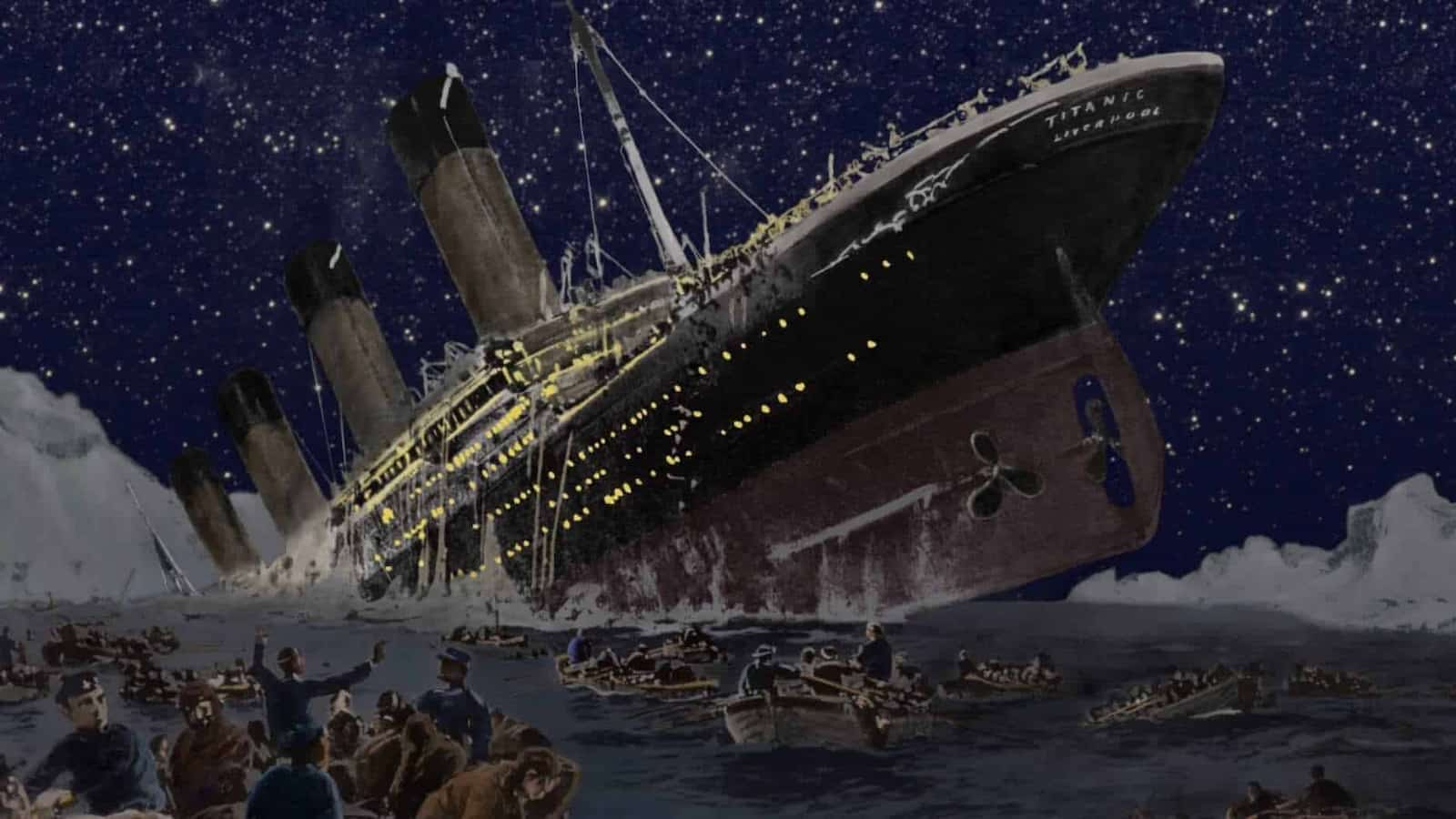
It’s critical to realize that cruise ship sinkings are quite uncommon. There have only been 22 cruise ship sinkings in the last 100 years.
Still, a number of shipwrecks happened while docked or being towed. Given the quantity of cruise ships that are in operation all year round, cruise ship sinkings are quite unusual.
Many safety precautions included into contemporary cruise ships reduce the possibility of a sinking. Strict rules and inspections also contribute to the high standard of safety that is maintained on these boats. Cruise ship sinkings are uncommon, which is partly due to these efforts and technological developments.
Cruise ship worker salary: How much do they make?
In contrast to this total, cruise ships in particular have an even lower frequency of sinking. Although it is difficult to pinpoint the exact number of cruise ship sinkings in the recent past, it is widely accepted that these incidents are uncommon and do not pose a serious threat to passengers.
In conclusion, the rarity of cruise ship sinkings can be attributed to stringent safety rules and contemporary technology. Travelers may relax knowing that their cruise ship experiences will be stable and safe.
Do Cruise Ships Sink Frequently?
Because of stringent restrictions and advanced safety systems, cruise ships seldom sink. In the last century, there have only been 20 cruise ship sinkings.
It is noteworthy that not all of these sinkings contained passengers or caused a sizable number of casualties.
The frequency of cruise ship sinkings has decreased due to advances in navigation technology.
Are Cruise Ships Capable of Sinking?
Cruise ships do occasionally sink, but this is extremely uncommon.
Contemporary cruise ships come with cutting-edge safety technologies that reduce the chance of capsizing. In addition, watertight compartments and improved hull construction keep a ship from absorbing too much water. Cruise ship crew members are also regularly trained in safety exercises and emergency procedures.
Despite these safety precautions, 24 cruise ships and ocean liners have sunk since the RMS Titanic disaster in 1912.
In spite of the disconcerting prospect of a cruise ship sinking, safety remains the cruise industry’s top priority. Compared to other means of transportation, passengers may travel with peace of mind on one of the safest modes.
When Did a Cruise Ship Most Recently Sink?
The last time a cruise ship capsized while carrying people on board was the Costa Concordia, which grounded in Italy in 2012. Thirty-four people perished when the Italian cruise liner struck rocks and subsequently capsized. The accusations made against the ship’s crew, especially Captain Francesco Schettino, who is currently serving a 16-year manslaughter term, made the incident noteworthy as well.
To provide the highest level of security for its patrons, the cruise industry has enacted a number of safety rules and procedures in recent years. These modifications have greatly decreased the quantity of mishaps and sinkings, which has helped to explain why we don’t hear about them as frequently.
Why Do Ships Stay Afloat?

Even while cruise ships, in particular, might be extraordinarily large buildings, their purpose is to float on water with ease. It is because of the buoyancy principle that cruise ships may float. Any object submerged in a fluid (such as water) experiences an upward force equal to the weight of the fluid the object has displaced. This is known as Archimedes’ principle, or the physical law of buoyancy.
The hull form of a ship is a major component that affects its buoyancy. Because of their wide, flat bottoms, ships are able to move a lot of water. This displacement produces an upward force that balances the ship’s weight.
If the density of the cruise ship is lower than that of the water, it will still float.
Steel and aluminum are two examples of strong, lightweight materials used in ships that offer structural support while maintaining a low overall density. In addition, the hull is separated into waterproof sections so that, in the event of damage, water does not flood the entire ship. This design keeps cruise ships from toppling over and aids in maintaining the ship’s buoyancy.
Preventing a ship from capsizing also depends on its stability. A low center of gravity is a feature of ship design. Heavy parts of the ship, including engines and fuel tanks, are located in the lowermost part of the structure to provide a low center of gravity. Even in choppy waters, the ship will stay upright and steady thanks to the design philosophy.
Best Cruises for Adults: 4 Perfect Cruise Lines for Adult Only experience
Overview of How Many Cruise Ships Have Sunk Throughout History
1912’s rms titanic.
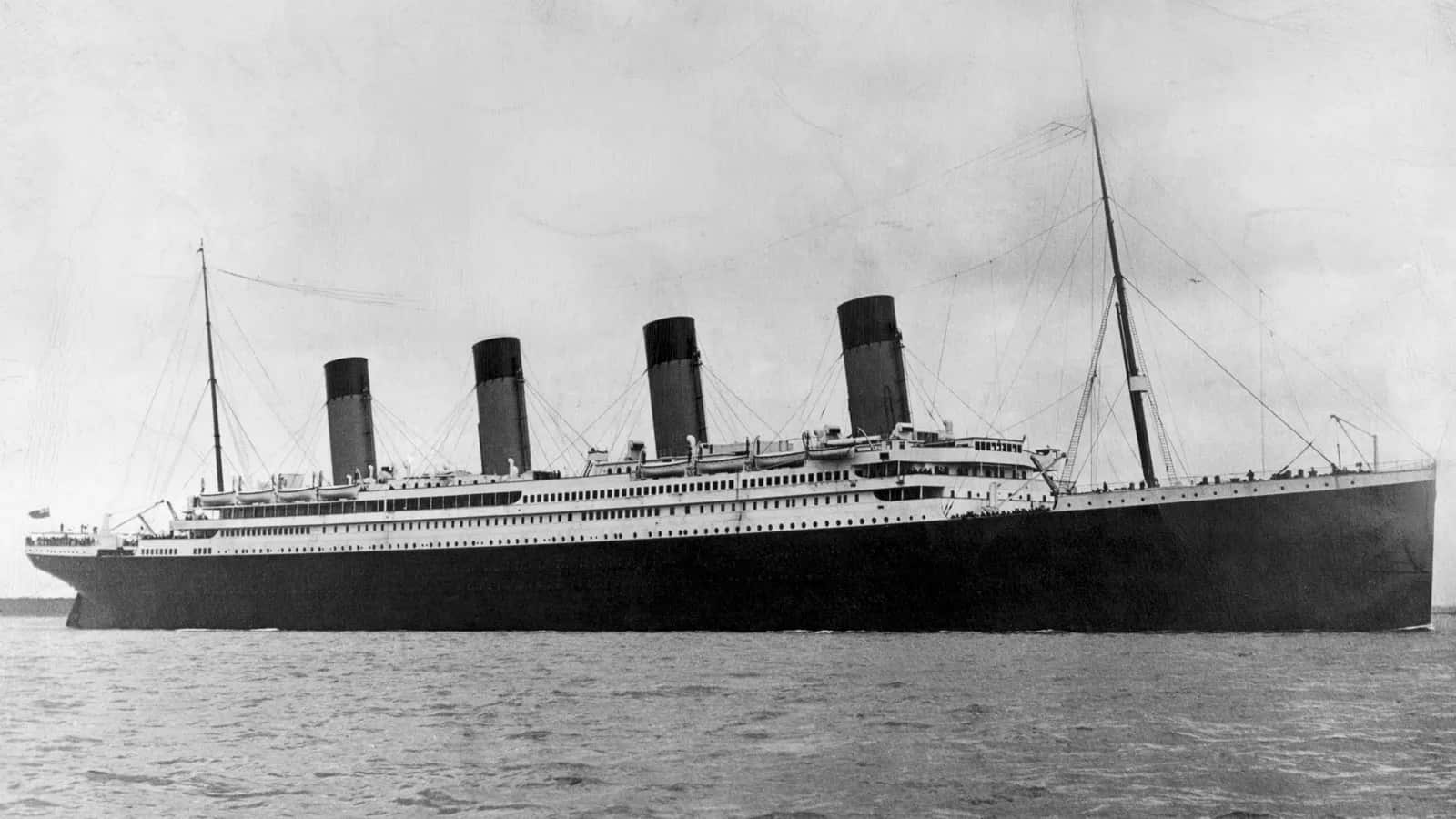
On April 15, 1912, the British passenger ship RMS Titanic sank in the North Atlantic Ocean. When the ship struck an iceberg on its first trip from Southampton, UK, to New York City, it sank. Out of the estimated 2,224 passengers and crew, 1,517 are thought to have perished in the accident.
The Titanic was regarded as an engineering wonder when it was built and was the largest ship ever to sail. With more than 2,200 passengers and crew members on board, she sailed for her maiden transatlantic voyage. Despite multiple alerts of icebergs up ahead on April 14, the Titanic proceeded to travel at a speed of 22 knots.
Lookouts noticed an iceberg on the ship’s course just before midnight. The Titanic suffered damage below the waterline when she met the iceberg on her starboard side due to her inability to turn quickly enough.
It was obvious the ship would sink when water began to fill it. There was a significant death toll from the Titanic accident because there were not enough lifeboats and the water was quite cold. Laws about maritime safety have significantly improved as a result of the disaster.
Empress of Ireland in 1914
Early on May 29, 1914, in the thick fog, the ocean liner RMS Empress of Ireland collided with another ship and sank in Canada’s St. Lawrence River.
There were 1,477 passengers and staff members on board the Empress as it traveled from Quebec City to Liverpool. The Norwegian collier Storstad struck the Empress, causing significant damage and rapid submersion. Despite hasty attempts to evacuate passengers, the ship sank in about fourteen minutes. The accident claimed 1,012 lives from those on board, making it the deadliest marine accident to occur in Canadian history during a peacetime.
1915’s RMS Lusitania
On May 7, 1915, during World War I, a German U-boat torpedo sank the British ocean liner RMS Lusitania, killing 1,198 people—passengers and crew. The Cunard Line-owned Lusitania was torpedoed off the coast of Ireland when it was making her 202 transatlantic voyage from New York to Liverpool.
A second explosion burst from the ship’s hull shortly after the torpedo hit. Due to the significant damage and degree of listing, only six lifeboats were able to descend from the starboard side of the ship.
The ship sank around eighteen minutes after the torpedo hit. Seventy-six out of the 1,962 passengers and crew on board the Lusitania made it out alive.
The RMS Lusitania was allegedly carrying 173 tons of weapons and ammunition, according to the German authorities. Apart from the small arms ammunition listed on the ship’s military cargo, the British government disputes that the ocean liner carried any war weaponry.
1916’s HMHS Britannic
HMHS Britannic was the third and largest Olympic-class ocean liner that White Star Line operated. Constructed as a transatlantic passenger liner, the ship was launched shortly before the outbreak of World War I.
Before Britannic could be used for passenger travel following the start of the war, the British Admiralty seized her and renamed her Britannic as a hospital ship. The Britannic ran into a naval mine that a German U-boat had planted while it was in the Aegean Sea in November 1916.
In approximately 55 minutes, the explosion destroyed much of the ship and caused serious damage. Despite the sinking’s rapid pace, the prompt evacuation saved 1,030 lives. 30 persons sadly lost their lives in the sinking.
1927’s Principessa Mafalda
Off the coast of Brazil in 1927, the Italian transatlantic liner SS Principessa Mafalda sank. The ship departed on her 14-day voyage after a technical delay.
The ship made multiple stops in the ocean during the voyage, indicating that it was not in good shape. The breakage of the starboard propeller shaft on October 25 resulted in numerous hull gashes.
The ship started to absorb water, and the watertight doors could not be closed all the way. It took the ship more than four hours to sink completely. However, miscommunication resulted in 314 fatalities.
1932-Georges Philippar
In 1932, the French passenger liner Georges Philippar caught fire and sank in the Gulf of Aden, killing fifty-four people. On May 16, during her inaugural journey off the coast of Italian Somaliland, Mme Valentin’s opulent cabin’s wood paneling caught fire due to a malfunctioning light switch.
The fire was allowed to spread quickly since there was a delay in reporting it. Captain Vicq tried to put out the fire and beach the ship, but things worsened.
The engine rooms were evacuated, leaving the Georges Philippar adrift. The captain issued a distress call and told the crew and passengers to get off the ship. The French ship Andre Lebon, the two British cargo ships Mahsud and Contractor, and the Soviet tanker Sovietskaïa Neft were the three neighboring vessels that came to the rescue.
Rescuers were able to save 698 people. 54 people died, nevertheless, some of them from desperate jumps overboard.
1934’s SS Morro Castle
On September 7, 1934, at around three in the morning, a fire broke out on board the opulent ocean liner SS Morro Castle, which was traveling from Havana to New York City. Strong winds contributed to the fire’s rapid out-of-control spread.
Chaos broke out as terrified passengers had to decide whether to leap into the sea or stay on the blazing ship, even as efforts were made to put out the fire and launch lifeboats. The ruined Morro Castle ran aground close to Asbury Park, New Jersey, after only six hours.
Only 312 of the 549 occupants, including the crew, made it out alive.
Following investigations, it became clear that a lack of training and preparation for fire safety contributed to the shockingly high death toll. The burned-out wreck, which served as a somber reminder of the horror everyone on board had to endure, remained on the beach until 1935.
The fatal incident made it clear that ocean liners need to strengthen their fireproofing, safety exercises, and crew training.
Empress of Britain – 1940
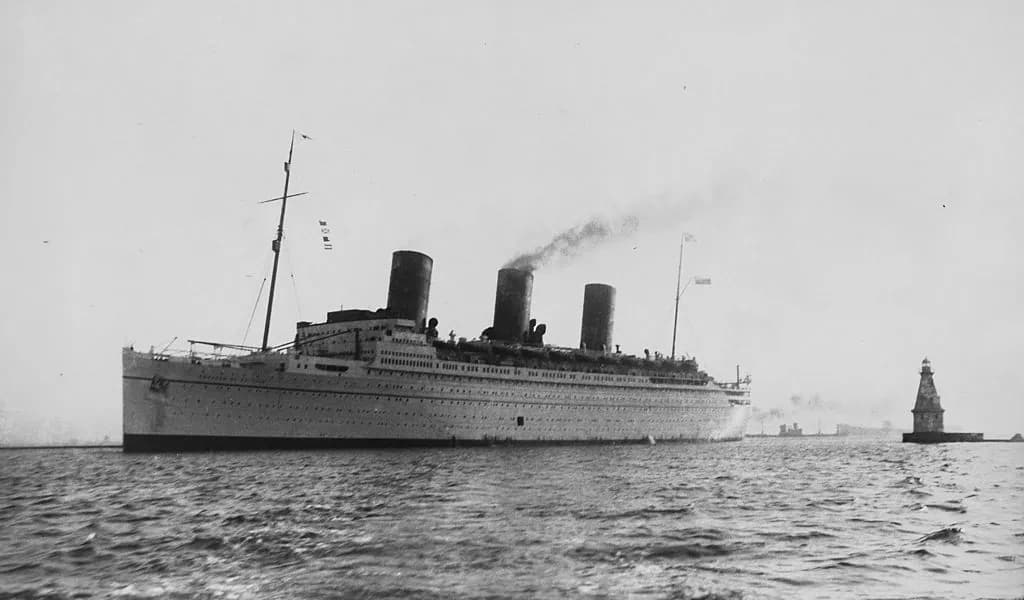
The Canadian Pacific Steamship Company, which the Canadian Pacific Railway and the RMS Empress of Britain owned, transported people and soldiers across the Atlantic during World War II.
The German submarine U-32 fired two torpedoes at the Empress of Britain early on October 26, 1940, as it was cruising roughly 450 miles west of Ireland. The damage was too great, leading the ship to list badly in spite of efforts to prevent flooding.
Lifeboats were hastily lowered into the darkness after the order to evacuate the ship, with some capsizing in the confusion as flares lit up the sky. British navy ships saved 1,259 people from the sinking liner, but 45 unfortunate people perished in the early explosions or drowned.
The graceful British Empress had disappeared under the seas by sunrise, exposing civilian ships to Germany’s merciless submarine warfare techniques.
Andrea Doria – 1956
In July 1956, the Italian ocean liner SS Andrea Doria carried more than 1,700 passengers and crew members on a normal trip from Italy to New York. In extremely foggy conditions, the Andrea Doria and the Swedish ship Stockholm collided on July 25, off the coast of Nantucket, Massachusetts.
Below the waterline, the Stockholm’s bow caused catastrophic damage by severing passenger compartments and stabbing into Andrea Doria’s side. Ten hours later, in excess of 200 feet of water, the mortally damaged Andrea Doria sank in spite of attempts to contain flooding.
Thankfully, 1,660 individuals made it out of the lifeboats. Nevertheless, 46 people died as a result of impact injuries and drowned during the intense crash.
How Cruise Ships Are Built: A 2-Year Process
1961’s Bianca C
The ship Bianca C is special since it sank twice. The first sinking occurred during World War II when a German-operated passenger ferry was sunk.
Before it sank in 1961, the ship’s hull was lifted and converted into a cruise liner.
With more than 600 passengers and crew, the Italian cruise liner Bianca C sailed from Grenada to Italy overnight on September 22, 1961. An explosion in the engine room at midnight caused a fire that swiftly spread throughout the ship.
The captain gave the order for the staff and passengers to leave the burning ship as smoke filled the halls. As other ships raced to help, liferafts and lifeboats were lowered into the murky tropical waters. While the majority of passengers safely evacuated the Bianca C, one staff member unfortunately perished in the explosion. However, the crew and all other passengers made it out safely.
1979 Angelina Lauro
In March 1979, Costa Lines acquired the aging Italian ocean liner Angelina Lauro. When the new cruise line was chartering the ship, it caught fire while berthed in Saint Thomas.
After burning for a few days, the ship was declared completely destroyed. The fire did not claim any lives.
1986’s MS Mikhail Lermentov
Around 1,000 guests and crew perished when the Soviet cruise ship Mikhail Lermentov struck rocks and sank off the coast of New Zealand on February 16, 1986. During the frantic evacuation, the chief electrical engineer sadly drowned, although no passengers were lost.
In a matter of hours, rescue ships and aircraft safely evacuated everyone else on board the sinking ship before it submerged beneath the water. A subsequent investigation found that inadequate navigation had caused the enormous ship to veer dangerously near the rocky reef in low light, rupturing a huge hole in the hull and quickly flooding the liner.
1986’s SS Admiral Nakhimov
On our list, SS Admiral Nakhimov has the most intriguing tale. The ship has sunk three times in total.
It served as a hospital ship for Germany during World War II before being lost.
The ship was turned up to the Soviet Union as payment for reparations. The Germans had hidden mines in the ship’s hull, which detonated and caused the ship to sink a second time, despite Soviet attempts to retrieve its hull.
On August 31, 1986, the SS Admiral Nakhimov sank for the third and last time. In the Black Sea, close to the Strait of Kerch, the Soviet passenger liner and the bulk freighter Pyotr Vasev collided. Admiral Nakhimov’s hull sustained a huge hole from the accident, which quickly caused the ship to flood.
When the electricity went out, the evacuation process became disorganized due to a lack of lifeboats and inadequate leadership. The Admiral Nakhimov sank after capizing in thirty minutes. Sadly, more than 423 people perished.
1988’s MV Jupiter
The British roll-on/roll-off ferry MV Jupiter and the tanker Phoenix II collided on June 21, 1975, as the two were traveling from Dover to Zeebrugge across the English Channel. The accident caused catastrophic flooding by rupturing open the car deck of the MV Jupiter.
The majority of the 585 passengers and crew were evacuated as the Jupiter began to list alarmingly. Tragically, two passengers—a teacher and a student—as well as two crew members perished.
1988 Achille Lauro
As the Italian cruise ship Achille Lauro sailed off Somalia on November 30, 1994, a destructive engine room fire broke out and swiftly got out of control. Tragically, during a nocturnal emergency evacuation, two passengers perished.
Rescue ships and aircraft were able to successfully evacuate all remaining passengers and crew from the burning liner. The ship sank following two days of fierce firefighting.
An engine room explosion was found to be the cause of the safety systems’ deactivation.
MTS Oceanos – 1991
The Greek cruise liner Oceanos sank off the coast of South Africa on August 3, 1991, as a result of severe waves that broke a ventilation pipe. It’s thought that a poor repair made the pipe susceptible to impacts.
A broken ventilation pipe was to blame for the severe flooding. The captain and a few other crew members left the ship as soon as they realized it was sinking.
Amazingly, the entertainment crew stepped up and assisted guests in getting off the sinking ship. Over the following two days, nearby vessels saved all 571 people.
Sun Vista (1999)
The Sun Vista, a cruise liner from Malaysia, capsized in the Malacca Strait on August 8, 1999, due to extreme listing caused by an engine room fire that took off power. The well-trained crew quickly boarded lifeboats with all of the passengers and crew after making a call for assistance from nearby ships.
SeaBreeze (2000)
A catastrophic mechanical failure caused the cruise ship Seabreeze I to swiftly sink on December 17, 2000, when it was sailing about 225 nautical miles off the coast of Virginia. The 21,000 GT, 9-deck passenger ship had just been purchased by Cruise Ventures III, who was traveling from Halifax to Charleston when the catastrophe occurred.
According to reports, the boiler broke away, seriously injuring the engine room of the ship and resulting in significant flooding. The captain yelled “abandon ship” as the 40-year-old Seabreeze quickly began to take on water, requesting that the 34 crew members be rescued right away.
There was a lot of suspicion surrounding the sinking since some people thought it was intentional. The old Seabreeze had a $20 million insurance policy even though its scrap value was probably about $5–6 million.
The vessel capsized in international seas. Maritime authorities questioned Panama’s thoroughness and were dismayed when the ship, which was flying the flag of another country, sank in international waters. This placed Panamanian jurisdiction over the probe.
The captain’s decision to abandon the ship rather than try to salvage it also raised suspicion.
Rescuers from the US Coast Guard thought it was extremely unusual that the ship could sink that quickly. The captain insisted on a full evacuation instead of asking for salvage tugs, which shocked the Coast Guard.
Britannis (2000)
The Britanis experienced a leak in the ship’s rear while en route to an Indian scrapyard. The boat’s owners let it sink after determining that fixing the leak would be too expensive.
The boat was being pulled by tug boats with no one on board. Additionally, no one was hurt in the incident.
2007’s MS Sea Diamond

Sea Diamond sank on April 5, 2007, after going off course and hitting coral near Santorini. When the ship lost power and listed, the crew quickly rescued nearly all 1,195 passengers.
Tragically, two passengers perished in the sinking. The damaged Sea Diamond had submerged in 500 feet of water by the afternoon.
The captain was first accused of veering dangerously near to shore during the investigation; however, it was later found that the area’s maritime charts were erroneous. The boat came aground 131 meters from shore, while the reef was shown on the map as 57 meters.
2007’s MV Explorer
The cruise ship MV Explorer struck an iceberg early on November 23, 2007, causing it to sink off the coast of Antarctica. The iceberg tore open the ship’s hull, resulting in catastrophic flooding.
The well-trained crew quickly evacuated all 154 passengers and crew members onto lifeboats as the crippled ship lost power and leaned precariously close to King George Island. A great emergency reaction saved every life in the dramatic sinking in icy Antarctic waters.
After a five-hour drift on the lift rafts, MS Nordnorge recovered all 154 survivors.
2012’s Costa Concordia
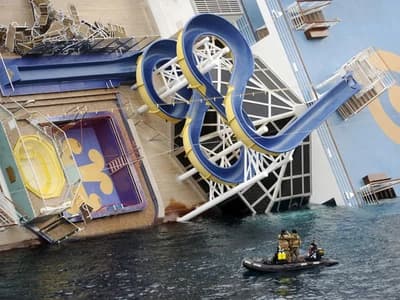
On January 13, 2012, the Costa Concordia cruise ship was wrecked off Giglio Island, Italy. Leaving Civitavecchia in Lazio, the ship, carrying 4,252 people from all over the world, struck a reef during an unofficial salute to local islanders. The Costa Concordia crashed off the Italian island of Giglio on January 13, 2012, killing around 4,252 passengers and crew. A 951-foot cruise liner veered off course and approached too closely.
The impact that ripped a 160-foot gash in the hull led to significant listing and partial sinking.
Despite the ship’s lifeboats, helicopters, and ships, 34 people died in the chaotic aftermath.
Captain Francesco Schettino caused the incident by carelessly deviating from the course. Authorities convicted him of manslaughter and he is currently serving a 16-year prison sentence.
2016’s Ocean Dream
After the owner of the cruise ship went bankrupt in 2015, the Ocean Dream was abandoned without a crew or maintenance personnel at Laem Chabang, Sri Racha, Thailand. In February 2016, the abandoned ship overturned and sank in shallow waters off the coast.
There were unsuccessful attempts to raise the sunken ship. The authorities decided to disassemble and demolish the Ocean Dream on location instead of refloating it. By the end of 2019, the disaster’s visible remnants had been disassembled and salvaged, leaving only the bottom hull of the wreck on the seafloor.
2020’s Orient Queen
The cruise ship Orient Queen suffered terrible damage 1,000 feet away from the big 2020 explosion that tore through Beirut’s dock. The strong blast wave severely damaged the Orient Queen’s hull, which also caused fires to spread, killing two crew members and injuring seven others.
The abandoned cruise ship capsized where it was parked, terminating its 40-year cruise career over the following 48 hours. It was not possible to salvage it.
Related Posts
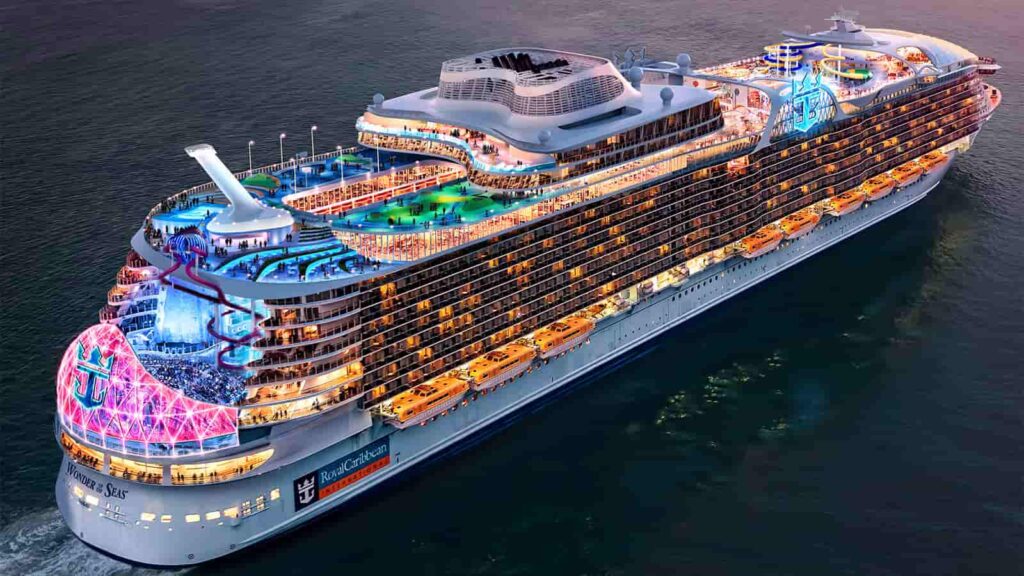
Royal Caribbean Cruises, History, Destinations and Itineraries

Ambassador Cruise Line: Ownership and History
Leave a comment cancel reply.
Your email address will not be published. Required fields are marked *
Save my name, email, and website in this browser for the next time I comment.

Old cruise ship with Hollywood past sinking into Delta now refloated
S AN JOAQUIN COUNTY – The decommissioned cruise ship that was sinking into the Delta near Stockton has now been refloated, officials say.
Work to refloat the Aurora got underway over the weekend, according to the California Department of Fish and Wildlife's Spill Prevention & Response. CDFW announced on Wednesday that the refloating had been completed.
Last week , crews had installed dewatering pumps onto the Aurora . The old ship – notable for its historic Hollywood connections – had been docked in Potato Slough when it started taking on water in late May.
Crews have recovered about 14,900 gallons of water that had been mixed with oil from the sinking ship, CDFW says. Other debris and hazardous waste has also been removed.
More spill mitigation work will be ongoing, officials say. Crews will also continue to stabilize the vessel and the safety zone around the Aurora remains in place.
Before being moored near Stockton, the Aurora had a storied past that included an appearance in a James Bond film. The Aurora was also the inspiration for the 1970s TV show "The Love Boat."

My first cruise with my son was a nightmare. We lost power twice, had to shower with flip-flops, and couldn't make 2 of our destinations.
- Up until this year I had never been on a cruise before.
- I decided to take my 10-year-old son over Spring break.
- The cruise desperately needed some TLC and we lost power twice.

Until this year, I'd never been on a cruise — and I swore I never would. As someone anxious in general, I had plenty of reservations. What if there was a norovirus outbreak? What if I got seasick? What if the ship hit an iceberg, sinking like the Titanic? But as I brainstormed potential Spring break destinations with my 10-year-old, I reconsidered.
As a single mom, I don't love navigating new places alone, and organizing a weeklong vacation felt overwhelming. Setting sail on a fun-packed cruise ship where everything was pre-planned was the perfect solution.
Related stories
I booked a five-night Key West and Bahamas cruise through Celebrity, leaving from Miami. To avoid feeling trapped, I chose a stateroom with a veranda. We could sit outside in the salty ocean air and enjoy the stunning views.
Our pitstop in South Beach
To keep things stress-free, I bookended our trip with a full day and night in South Beach . Neither of us had been there, and the day before our cruise, I splurged on The Miami Beach Edition . The 5-star property, with private beach access, ocean-facing pools, and an on-site ice rink and bowling alley, did not disappoint.
We chose Estiatorio Milos for Easter dinner, a Greek seafood restaurant where fish flown in fresh from the Mediterranean are displayed. The experience included a chef visiting our table to discuss the day's offerings. Our trip was off to an incredible start.
Our cruise experience wasn't great
Boarding our cruise ship, the Celebrity Summit, went smoothly, and we went right to our stateroom , which appeared as advertised. On the balcony, we watched the sunlight dance on the water's surface. I relaxed, letting my worries slip away.
But when I went inside and opened the bathroom door, the musty smell of mildew overwhelmed me. During that night's shower, I discovered why as the water collected in a pool at my feet. From then on, we wore our flip-flops and showered fast.
We made our first port and explored the delightful city of Key West. But our boat couldn't dock the next day due to high winds, so we missed our second destination, Bimini, Bahamas . Disappointed, we explored the boat, looking for fun diversions. But other than gambling and drinking, there wasn't much to do.
The pool was rusty and dirty, and the "arcade" consisted of two Xboxes in a small room. The ship, built in 2001 and refurbished in 2016, desperately needed some TLC. Chipped tile, stained carpets, and broken faucets were a few of its glaring issues. My son checked out the gift shops while I grabbed a coffee. A salesperson put a $2,000 watch on his wrist, encouraging him to make the purchase. Luckily, he knew better.
We even lost power
During a several-hour power outage, our imaginations took over. We discussed the possibility of onboard pirates — zero communication from the crew didn't help. At one point, dark sludge crept up through our shower drain, and our toilet stopped working. When the power came back on, the $270 Wi-Fi didn't, and it remained spotty for the rest of the voyage.
The ship went black again during dinner the next day. The staff served our meal in the dark like nothing was amiss. At that point, we wanted off. The next day, we docked in Nassau, Bahamas, where we played in the ocean. I let my son take me on a Jet Ski ride, which was the highlight of his trip.
The following morning was debarkation day. We couldn't get off the boat fast enough.
We enjoyed another beautiful day at South Beach, sinking our toes in white sand beaches and exploring the outdoor Lincoln Road Mall.
Though our cruise experience was probably an outlier, I won't chance it again. But South Beach? We're in love.
Watch: Cruise ship captain breaks down 8 cruise ship disasters in movies and TV
- Main content
- Share full article
Advertisement
Supported by
Wreckage of Shackleton’s Last Ship Is Found Off Coast of Canada
Ernest Shackleton was sailing for Antarctica on the ship, called the Quest, when he died in 1922. Researchers exulted over the discovery of its wreckage, 62 years after it sank in the Labrador Sea.

By Hank Sanders
Endurance, the ship that carried Ernest Shackleton on his ill-fated attempt to cross Antarctica in 1915, spawned one of the greatest survival stories in the history of exploration and now holds a revered place in polar history.
The discovery of its wreckage at the bottom of the Weddell Sea in 2022 put Shackleton back in the spotlight and rekindled interest in finding a lesser-known vessel, the Quest, which was carrying him back to Antarctica when he had a heart attack and died in 1922. The Quest sailed on for another 40 years until it sank on a seal-hunting voyage off Canada’s Atlantic coast in 1962.
On June 9, John Geiger, the leader of an expedition to find the Quest, saw an unusual shape pop up on his boat’s sonar detection screen as his research vessel floated off the coast of Newfoundland and Labrador. He knew almost immediately that a final discovery in the life of one of history’s most revered explorers had been made.
“This is the last big Shackleton event,” Alexandra Shackleton, the explorer’s granddaughter, said in an interview, referring to the discovery of the Quest. “There won’t be anything else as important as this.”
The expedition to find the Quest was led by the Royal Canadian Geographical Society, an educational charity of which Mr. Geiger is the chief executive, and cost 500,000 Canadian dollars, or about $365,000, according to a spokeswoman for the society. The Quest was the last missing artifact from the “heroic age of Arctic exploration,” said Martin Brooks, a Shackleton expert and the chief executive of Shackleton, an outdoor apparel company that offers trips that follow the explorer’s journeys.
But the Quest’s discovery didn’t come easily for the 23 voyagers who took part in the expedition to find it. The crew battled treacherous conditions, including dense fog and malfunctioning equipment, after they left the port of St. John’s on June 5. They scanned the ocean floor with their sonar systems for 17 grueling hours before finding the ship.
“I turned to Shackleton for guidance,” Mr. Geiger said. “One of his defining traits was patience. Being patient and resolute.”
Shackleton is best remembered for what he did to save his crew after Endurance was crushed in pack ice in the Weddell Sea in 1915, causing it to sink and stranding the voyagers on ice plains.
“What followed was a yearlong, almost impossible-to-believe ordeal during which Shackleton displayed the skills that have earned him a well-deserved reputation as one of the greatest leaders of all time,” Nathaniel Philbrick wrote in his introduction to “Endurance: Shackleton’s Incredible Voyage” by Alfred Lansing.
The sinking of the Endurance, months after the ship became trapped in ice, stranded Shackleton and 27 crew members on ice floes and dashed their hopes of becoming the first to cross Antarctica on foot. Shackleton led some of his men on a small-boat voyage to the island of South Georgia, where he organized the successful rescue of his remaining crew members.
Two years had passed since Endurance first set sail from England. Although the men were exhausted and dehydrated, Shackleton wrote to his wife , Emily, “Not a life lost, and we have been through hell.”
Mr. Geiger’s patience was eventually rewarded. At around 7 p.m. on June 9, as he watched the sonar monitor in the boat’s research laboratory, Mr. Geiger suddenly saw an odd shape.
“Very quickly you could see it was Quest,” he said in an interview. “The vessel is intact. It’s sitting on its keel, the mast is down, and you can see it on the seafloor.”
Mr. Geiger immediately called all of the crew members into the ship’s laboratory, including David Mearns, a veteran shipwreck hunter, who helped plan the journey.
“They are jumping up and down, they are slapping each other on the back,” Mr. Mearns said in an interview, recalling the crew during the moment of discovery. “They are, like, having this moment of ecstasy.”
When the crew refocused, they spent the next five hours towing their boat’s sonar back and forth over the wreckage, gathering more angles and pictures of it at the bottom of the Labrador Sea. Eventually, the experts aboard were able to definitively declare they had found the Quest.
There are already plans to return to the Labrador Sea later this year to take more images and video footage of the wreck, Mr. Mearns said.
Shackleton was planning to use the Quest to explore a portion of the Antarctic when he died in his cabin on Jan. 5, 1922. The Quest was anchored at the time near South Georgia, the island where he plotted the rescue of Endurance’s crew. For the next four decades, it was used in rescue operations and for exploration, as well as for seal-hunting trips, according to Canadian Geographic . It was on one of those trips on May 5, 1962, when it met a similar fate as the Endurance; it was damaged by ice and sank off the coast of Newfoundland and Labrador, the Royal Canadian Geographical Society said. The Quest’s crew members survived.
More than a century after his death aboard the Quest, Shackleton’s journeys continue to enthrall historians and members of the public through popular books, a Harvard Business School course on “resilient leadership” and an upcoming biopic starring Tom Hardy.
Aboard the normally alcohol-free research ship, Mr. Geiger got permission to bring along a few bottles of champagne in case they found the Quest. He kept the bottles a secret from the crew so as not to jinx the journey.
Luckily, Mr. Geiger did not have to keep the secret for long.
“I’ve got to admit,” he said, “that was the sweetest glass of champagne I’ve ever had.”
An earlier version of this article misstated Ernest Shackleton’s destination when he died aboard the Quest. It was the Antarctic, not the Arctic.
How we handle corrections

IMAGES
VIDEO
COMMENTS
On 13 January 2012, the seven-year-old Costa Cruises vessel Costa Concordia was on the first leg of a cruise around the Mediterranean Sea when she deviated from her planned route at Isola del Giglio, Tuscany, sailed closer to the island, and struck a rock formation on the sea floor.This caused the ship to list and then to partially sink, landing unevenly on an underwater ledge.
The Sinking of MV Jupiter (October 1988) The MV Jupiter, a Greek cruise ship, started sailing in 1961 as the Moledet. On October 21, 1988, it sank after leaving Piraeus, Greece. An Italian freight ship hit it. The ship had nearly 400 British students, 84 adults, and 110 crew members on a study cruise.
0:00. 1:35. GIGLIO, Italy — Ten years have passed since the Costa Concordia cruise ship slammed into a reef and capsized off the Tuscan island of Giglio. But for the passengers on board and the ...
Costa Concordia disaster, the capsizing of an Italian cruise ship on January 13, 2012, after it struck rocks off the coast of Giglio Island in the Tyrrhenian Sea.More than 4,200 people were rescued, though 32 people died in the disaster.Several of the ship's crew, notably Capt. Francesco Schettino, were charged with various crimes.. Construction and maiden voyage
The Italian captain went back onboard the wreck for the first time since the sinking of the cruise ship on January 13, 2012, as part of his trial for manslaughter and abandoning ship.
The sinking of the Costa Concordia: 10 years later. Ten years after the deadly Costa Concordia cruise line disaster in Italy, survivors still vividly remember scenes of chaos they say were like ...
2 of 12 | . FILE— The grounded cruise ship Costa Concordia is seen through a window on the Isola del Giglio island, Italy, Friday, Feb. 3, 2012. Italy on Thursday, Jan. 13, 2022, is marking the 10th anniversary of the Concordia disaster with a daylong commemoration, honoring the 32 people who died but also the extraordinary response by the residents of Giglio who took in the 4,200 passengers ...
She is one of the survivors of the shipwreck of the Costa Concordia, the luxury cruise liner that capsized after hitting rocks just off the coast of the small Italian island of Giglio on Jan. 13 ...
Associated Press. Jan. 12, 2022 2 PM PT. GIGLIO, Italy —. Ten years have passed since the Costa Concordia cruise ship slammed into a reef and capsized off the Tuscan island of Giglio. But for ...
Mr. Schettino tried to steer the cruise ship toward the port to make evacuation easier, but the vessel was out of control and began to tip as it neared the harbor, making many lifeboats useless.
Here, in chronological order, are the 24 cruise ships that have sunk in history: 1. April 1912: Titanic. Titanic Ocean Liner. Perhaps the most infamous cruise ship sinking took place on April 14 ...
FILE— Oil removal ships near the cruise ship Costa Concordia leaning on its side Monday, Jan. 16, 2012, after running aground near the tiny Tuscan island of Giglio, Italy, last Friday night. Italy on Thursday, Jan. 13, 2022, is marking the 10th anniversary of the Concordia disaster with a daylong commemoration, honoring the 32 people who died ...
A Coast Guard officer in contact with the ship at the time of the sinking claimed he told Schettino to get back onboard. After being convicted of manslaughter and pursuing several appeals, Schettino only started his 16-year prison sentence in May of 2017. The salvage effort (the ship was completely dismantled) was the largest effort of its kind.
Victims of the Costa Concordia disaster. The 70-metre gash allowed water to pour in and the ship eventually capsized and came to rest on its side at a location known as Seagull Point, just outside ...
1. The Unfateful RMS Titanic. The most infamous cruise ship accident has to be the RMS Titanic. The Olympic-Class Ocean liner was owned by White Star Line and built in Northern Ireland. It was the largest passenger ship of its time, designed by Thomas Andrews, capable of carrying over 3000 people.
On 13 January 2012, the Italian cruise ship Costa Concordia struck an underwater rock, capsized after it struck rocks off the coast of Giglio Island in the T...
The Viking Sky cruise ship is expected to dock at 4:30 p.m. local time in Molde, a port town in western Norway, the Joint Rescue Coordination Centre of Southern Norway said on Twitter.
On May 27, 2023, the Carnival Sunshine cruise ship encountered a violent storm off the coast of North Carolina, sending shockwaves through the cruise industry and raising concerns about passenger safety. While the ship eventually made it back to port safely, the incident served as a stark reminder of the unpredictable nature of the open sea and ...
2 of 2 | . This photo provided by the U.S. Coast Guard shows official representatives from the U.S. Coast Guard, the California Department of Fish and Wildlife and the City of Stockton respond to the sinking vessel Aurora, a non-operational 294-foot cruise ship permanently moored northwest of Stockton on Wednesday, May 22, 2024.
In 2023, a cruise ship sank resulting in loss of lives and property. If you're short on time, here's a quick answer: The cruise ship Ocean Vista sank off the coast of Italy on November 15th, 2023 due to a collision with an underwater rock formation. Over 200 passengers went missing and are presumed dead in one of the worst cruise ship ...
Costa Concordia The cruise ship Costa Concordia lies partially sunk just a few hundred yards from the rocky coast of the Italian island of Giglio on Monday. Though the fallout from the disaster ...
CNN —. Cruise ships are mostly standing idle due to the pandemic, but that hasn't stopped one "ghost' vessel jumping into action to rescue 24 people from a sinking boat. Carnival Sensation ...
Aurora, a non-operational 300-foot long cruise ship, began to sink at her berth into 13 feet of water below on May 22, 2024, where she remains partially submerged. The 1955-launched ship suffered ...
On January 13, 2012, Costa Concordia departed from Civitavecchia, Italy on a 7-night Mediterranean cruise with 3,206 passengers and 1,023 crew members onboard around 7:20pm. The ship was en route to its first port of call when Captain Francesco Schettino, who had worked for Costa Cruises for eleven years, strayed from the ship's original course, sailing close to the Tuscan island of Giglio.
Only twenty-four cruise ships—both river and ocean liners—have sunk since 1912. It's important to remember that some cruise ship capsizings happen while the ship was being towed or berthed. Because cruise ships are built sturdy and have current safety mechanisms, we can explain why there aren't many cruise ship sinkings.
SAN JOAQUIN COUNTY - The decommissioned cruise ship that was sinking into the Delta near Stockton has now been refloated, officials say. Work to refloat the Aurora got underway over the weekend ...
A luxury cruise ship rescued 68 migrants drifting off the Spanish Canary Islands on Wednesday, Spain's maritime rescue agency, Salvamento Maritimo, said in a statement on X.
What if the ship hit an iceberg, sinking like the Titanic? But as I brainstormed potential Spring break destinations with my 10-year-old, I reconsidered. ... Boarding our cruise ship, the ...
Ernest Shackleton was sailing for Antarctica on the ship, called the Quest, when he died in 1922. Researchers exulted over the discovery of its wreckage, 62 years after it sank in the Labrador Sea.